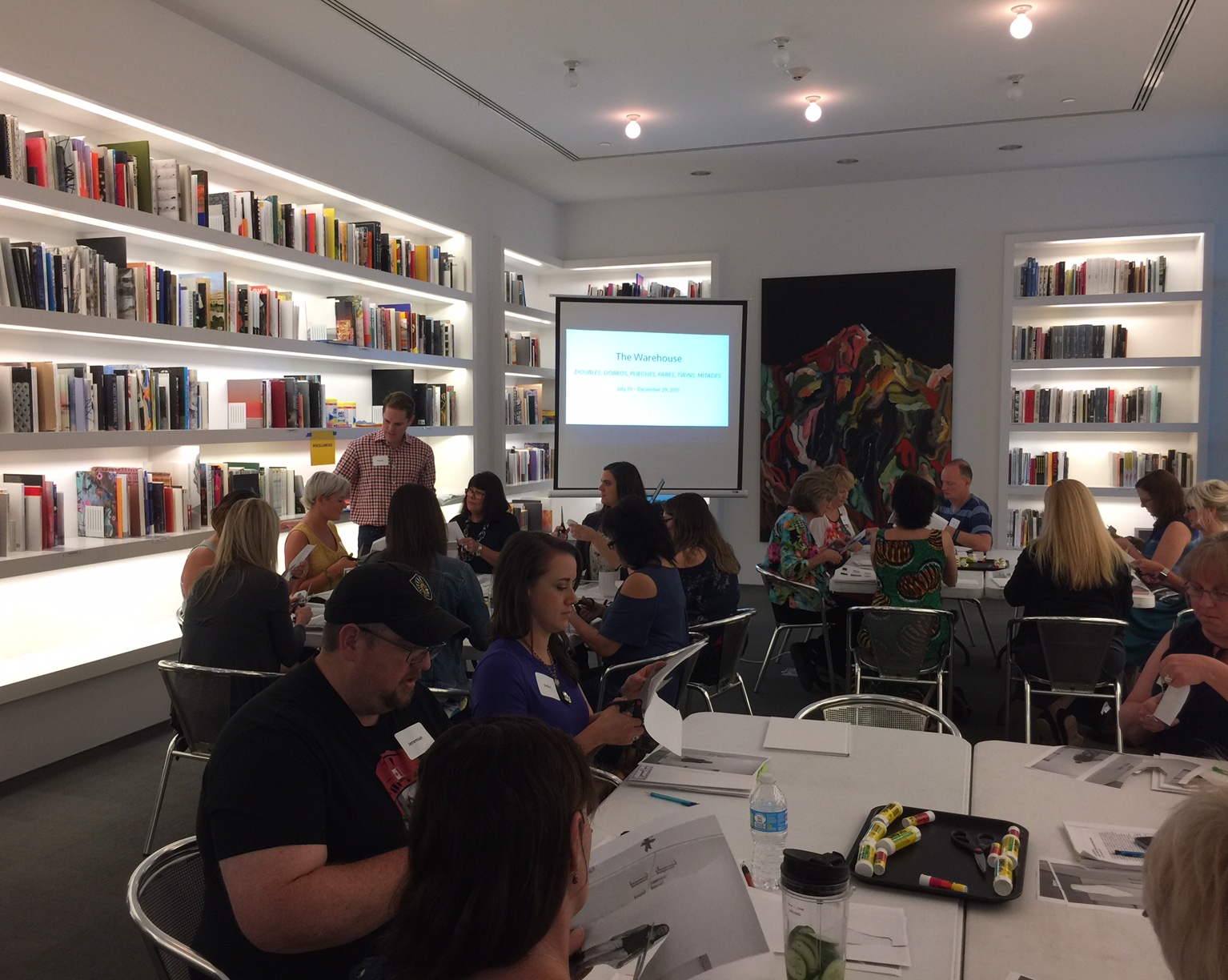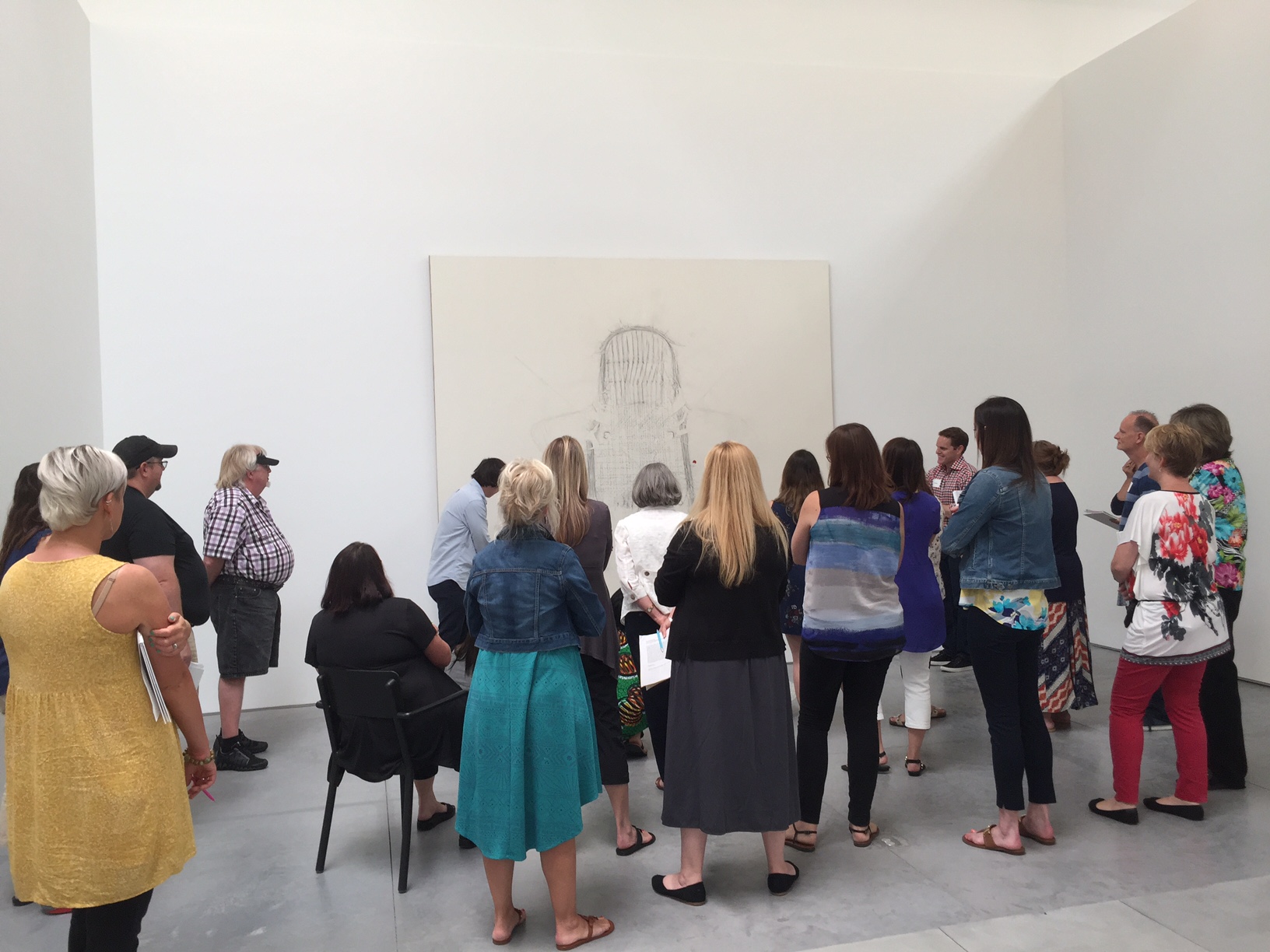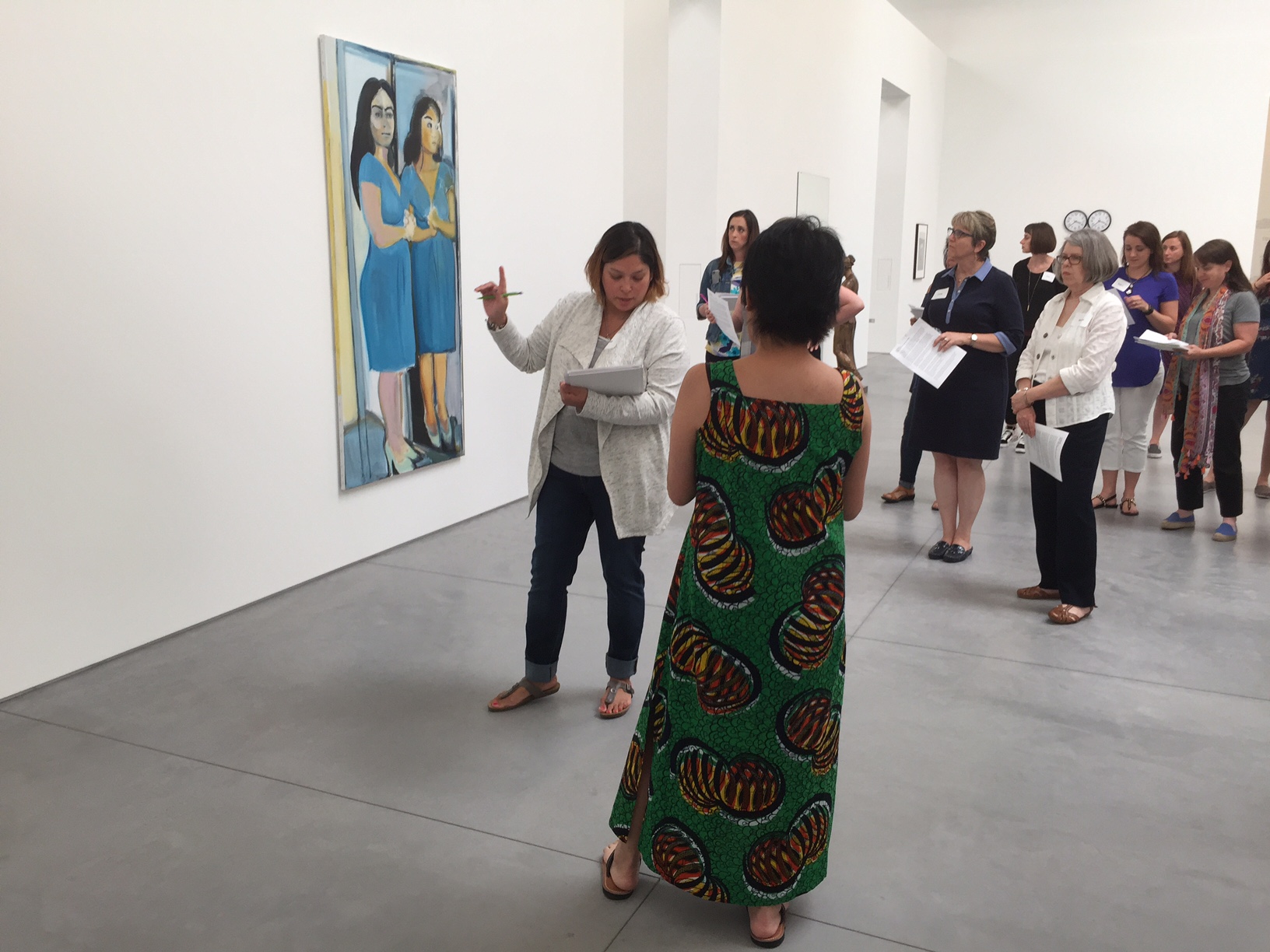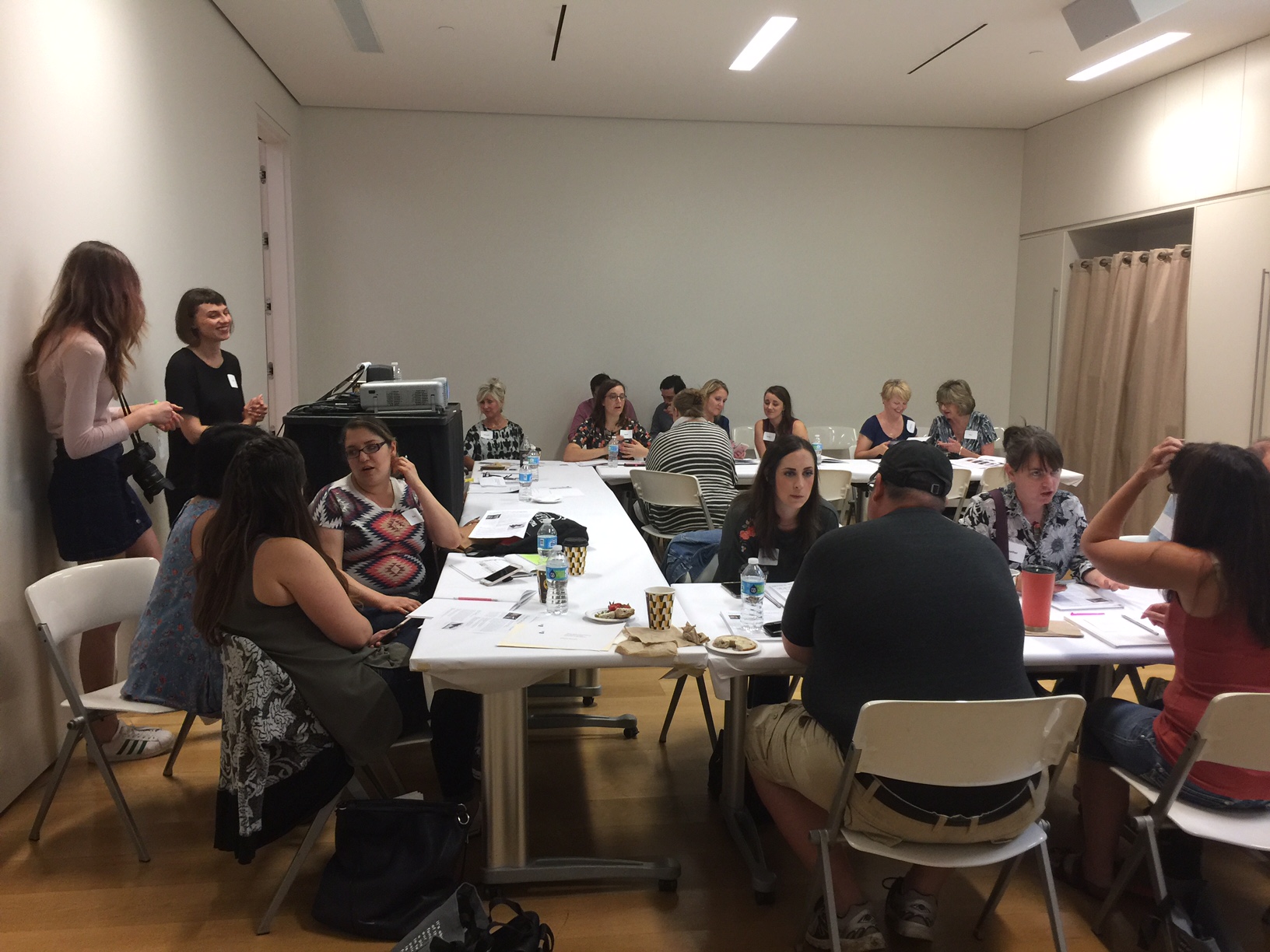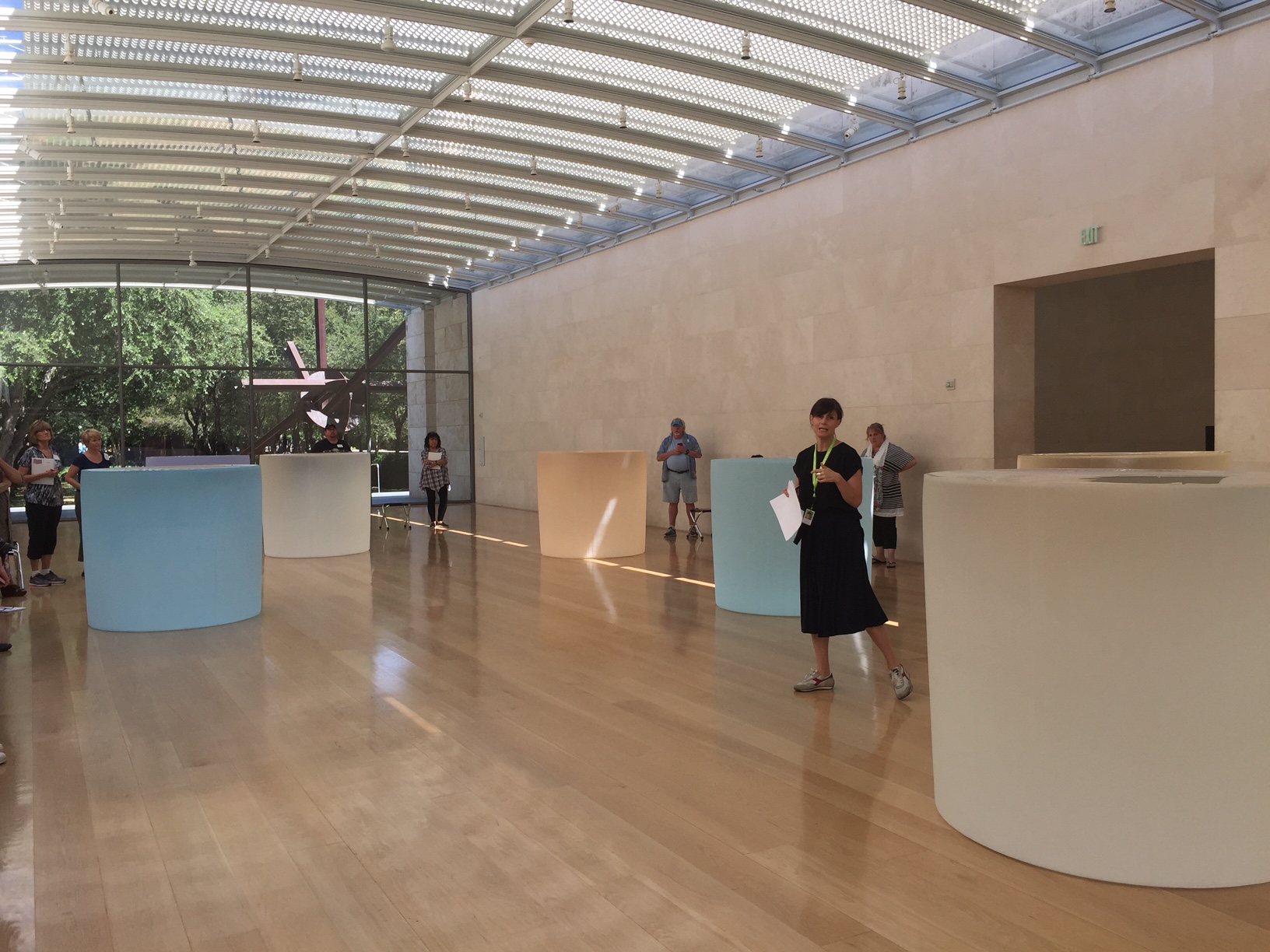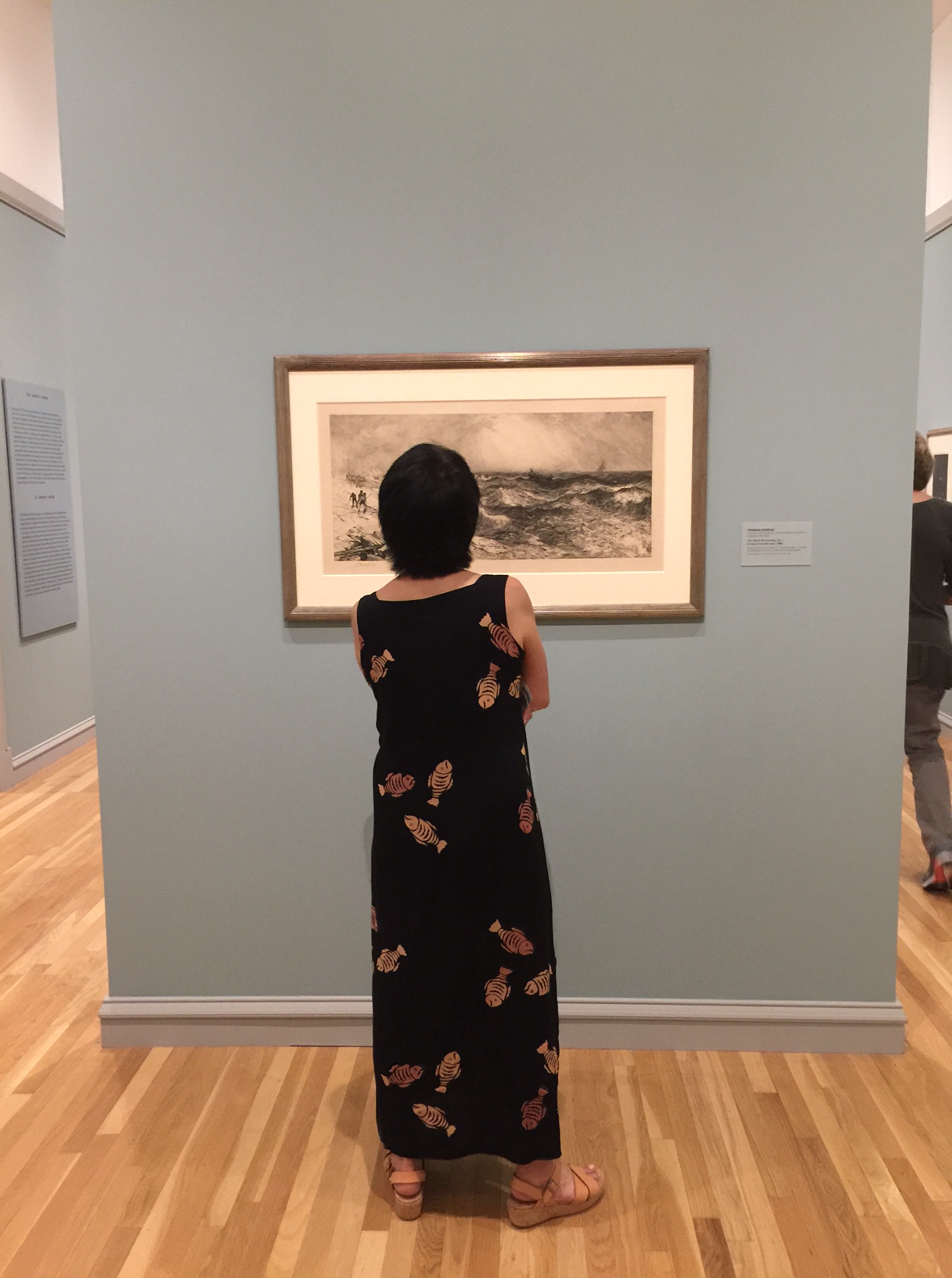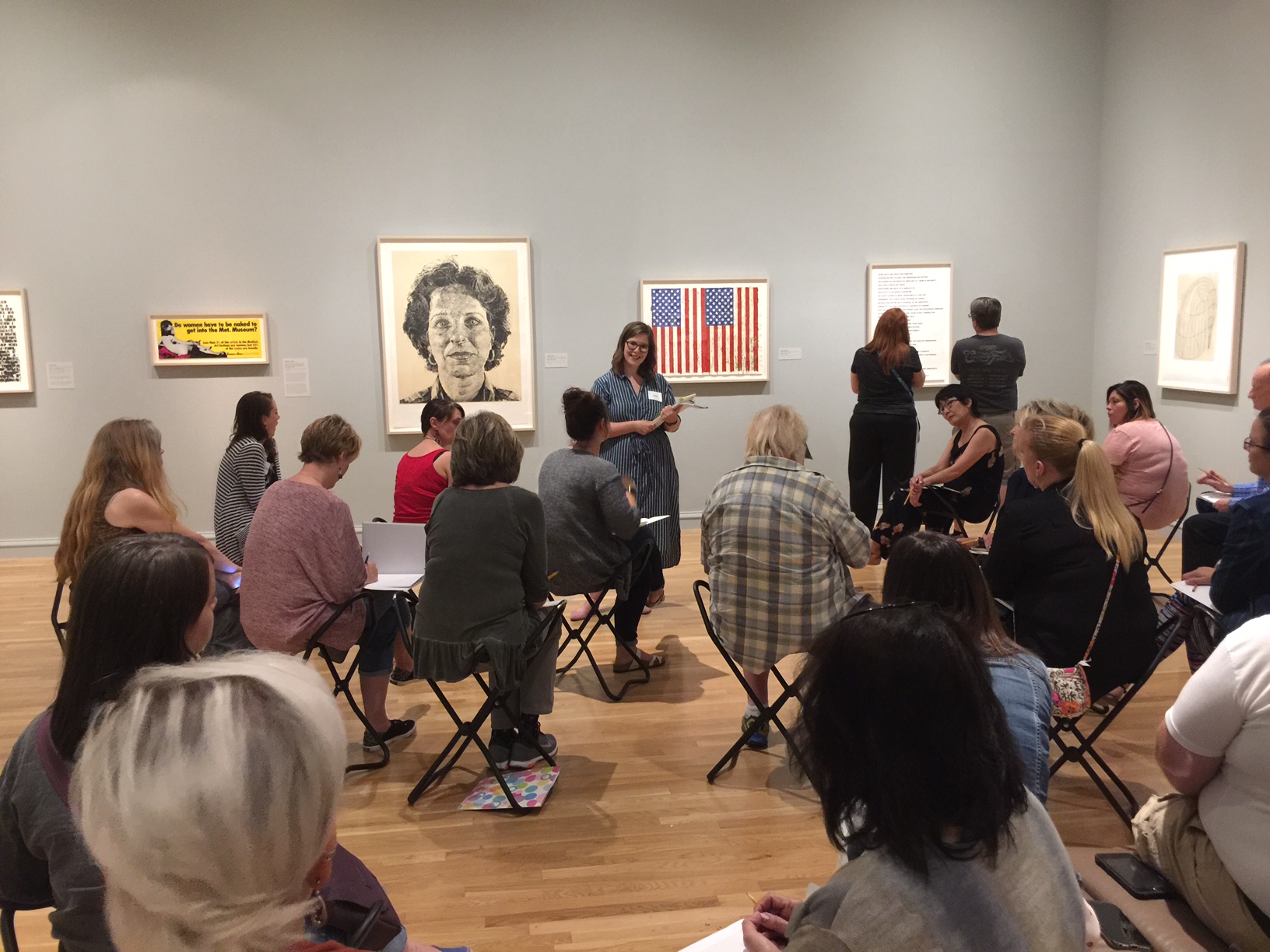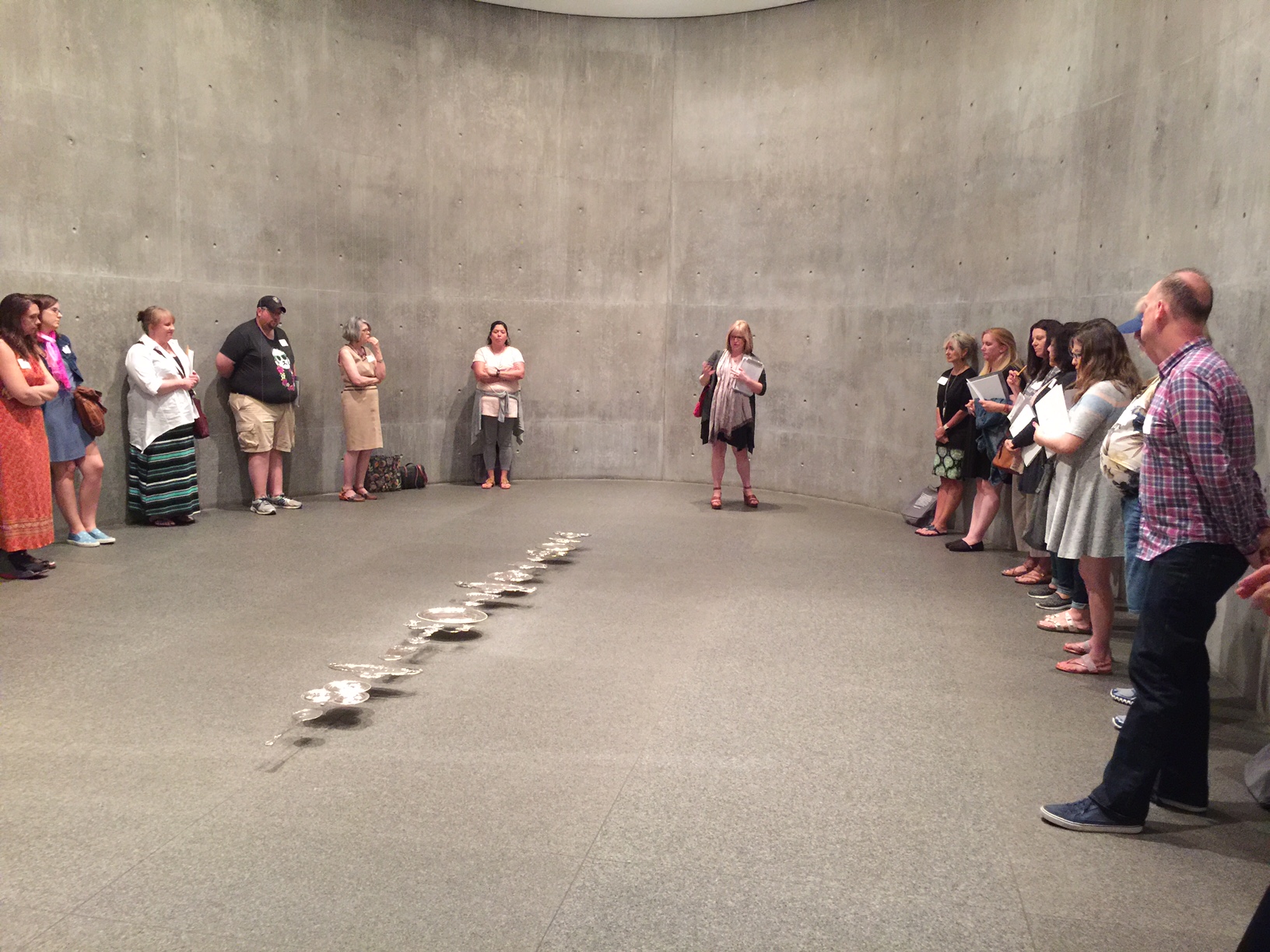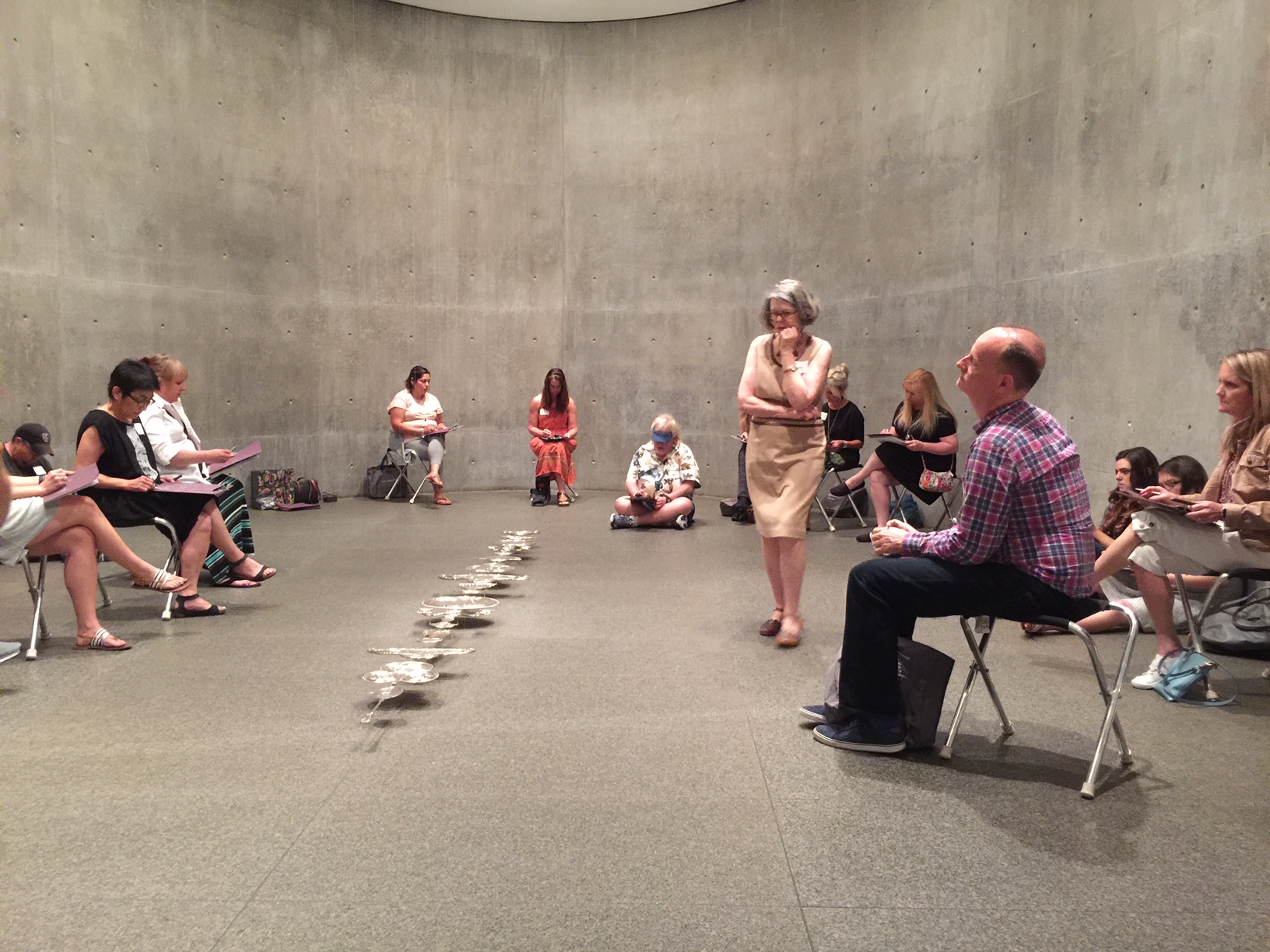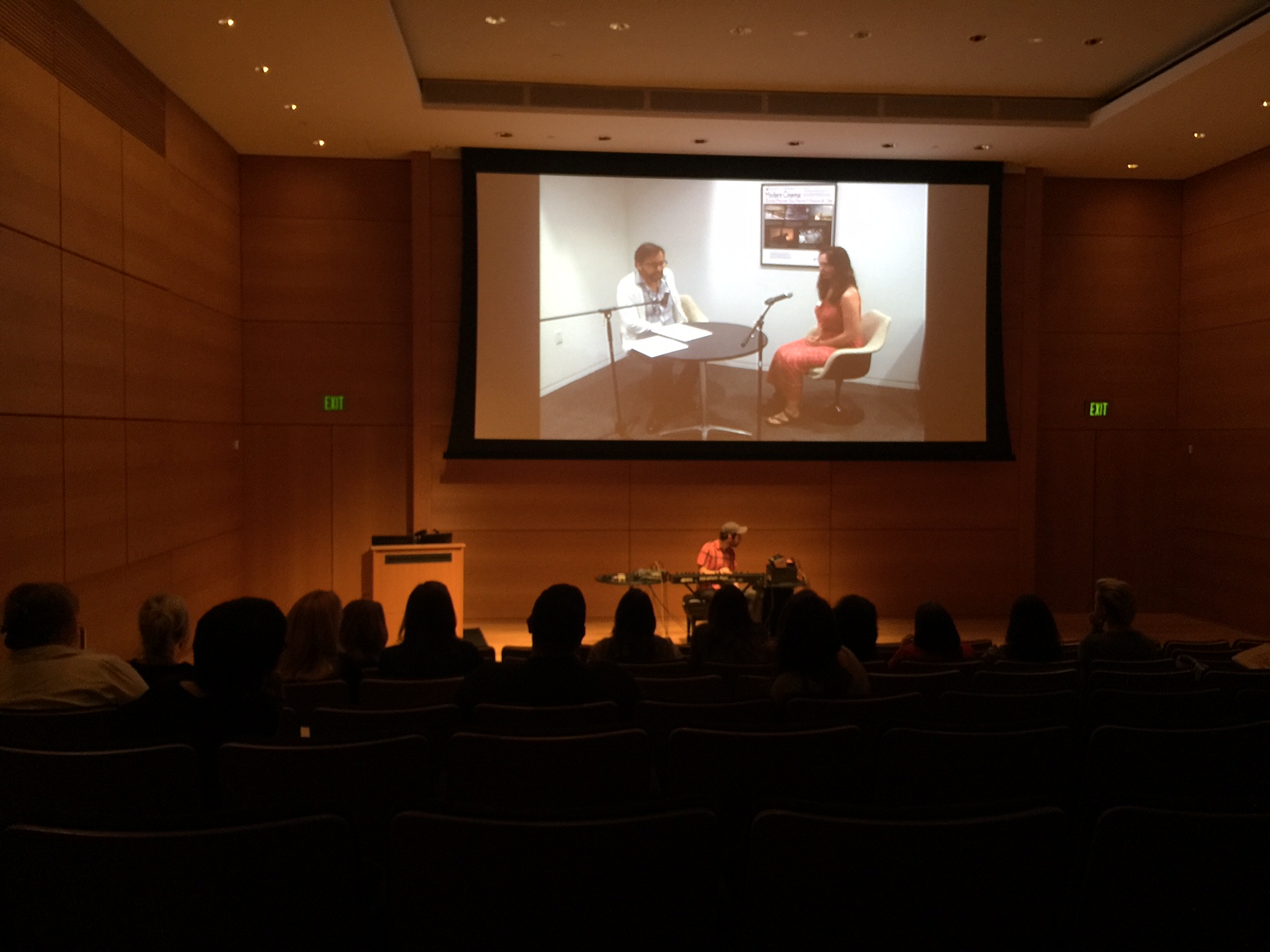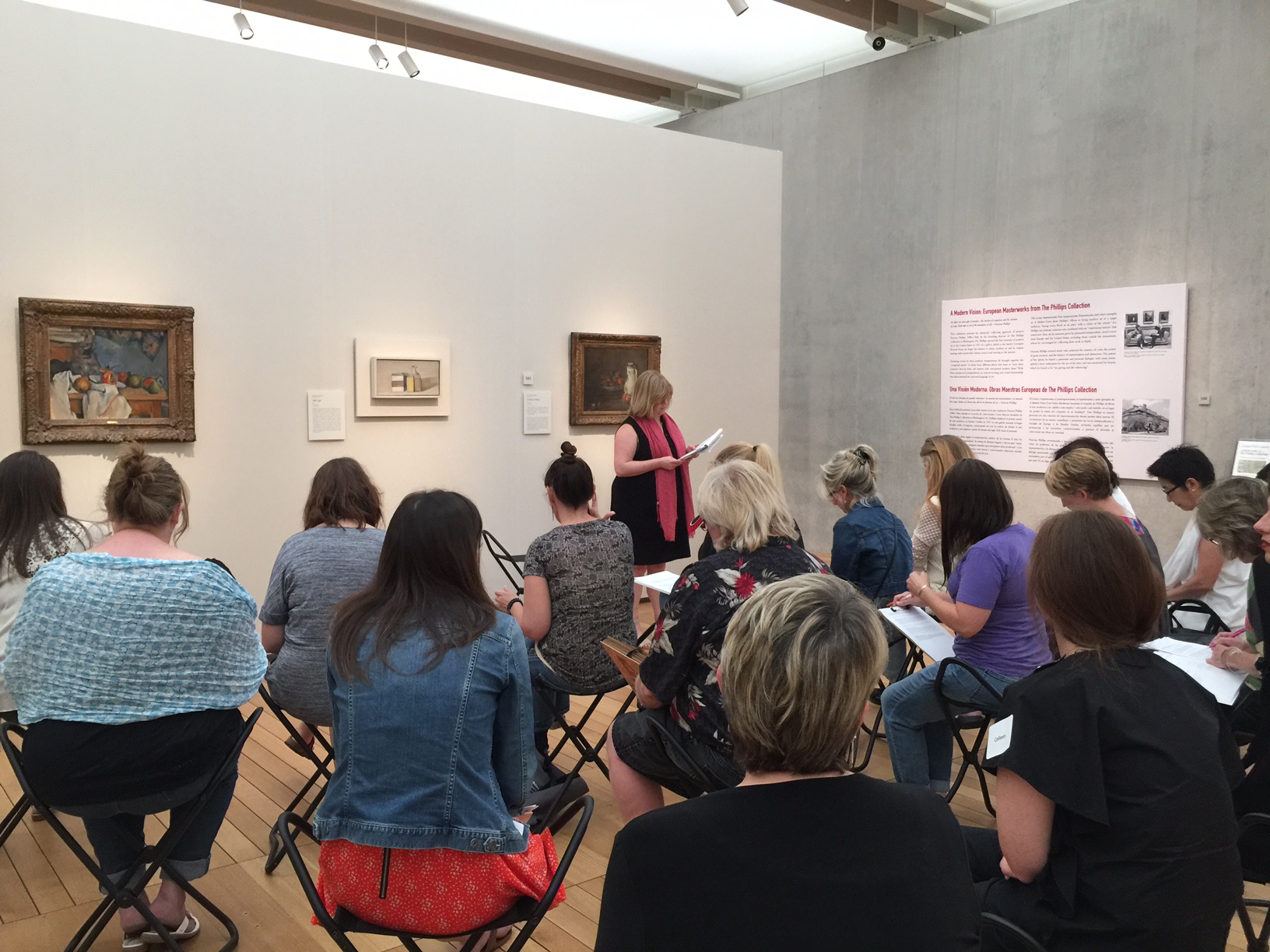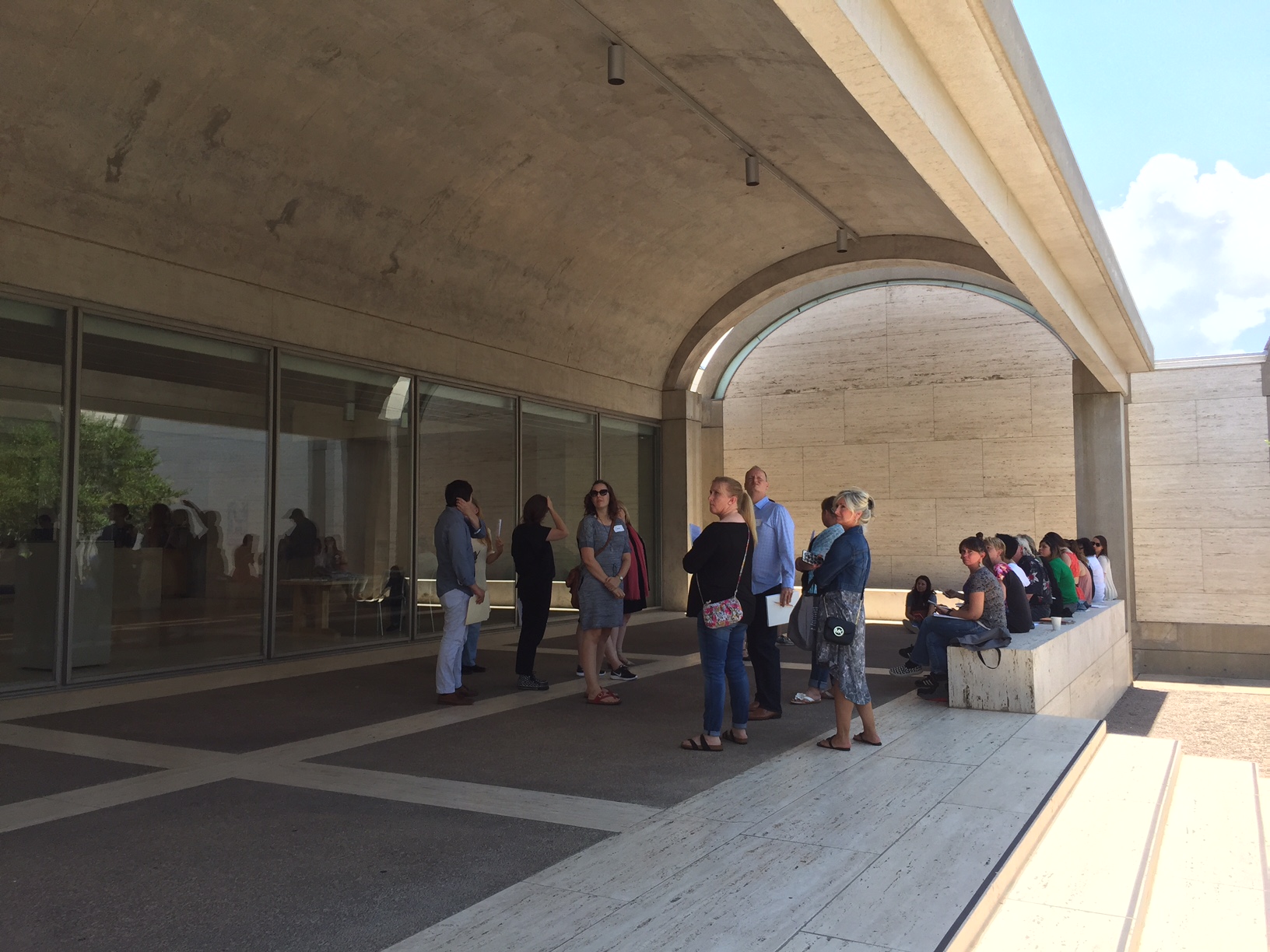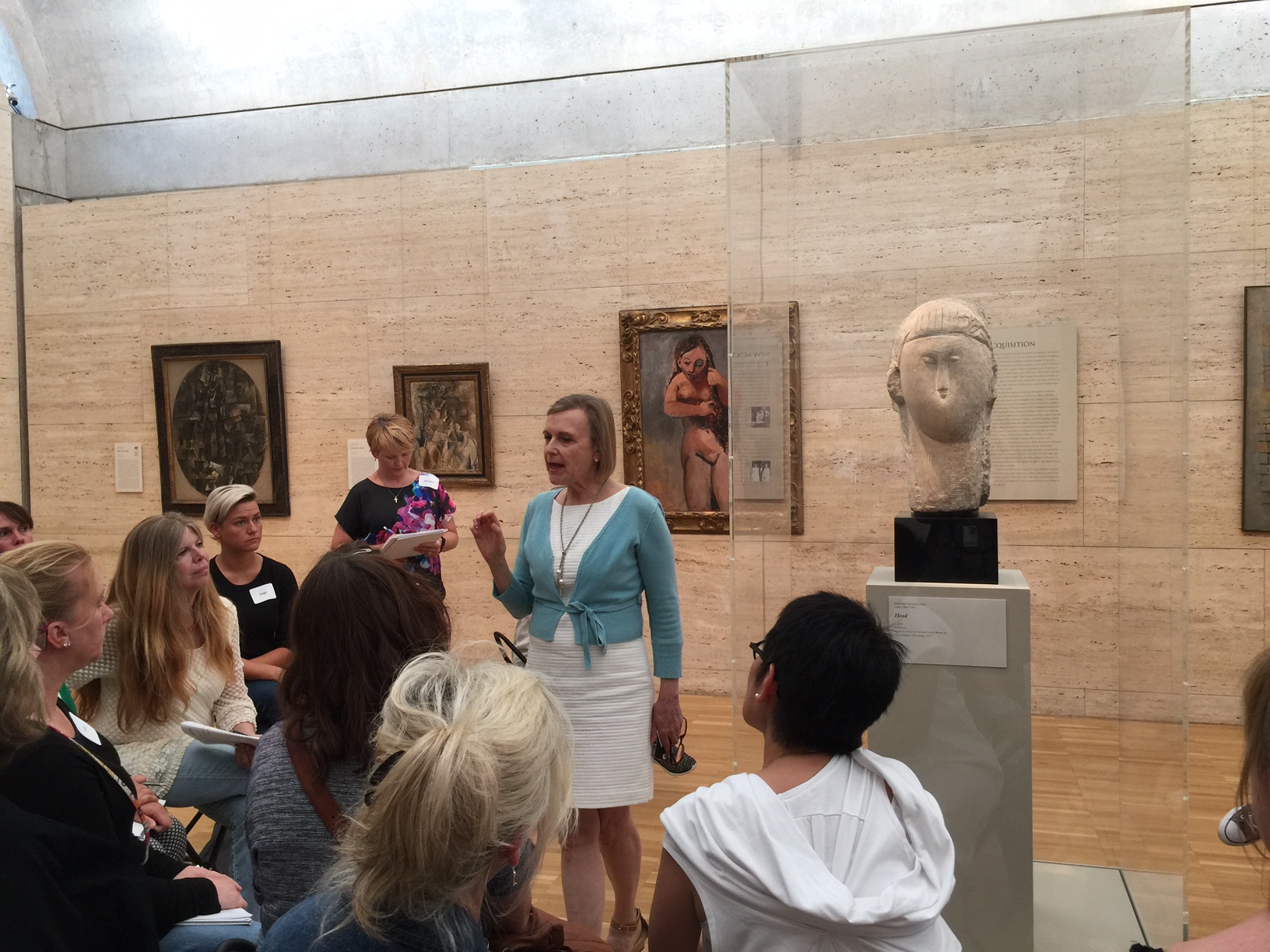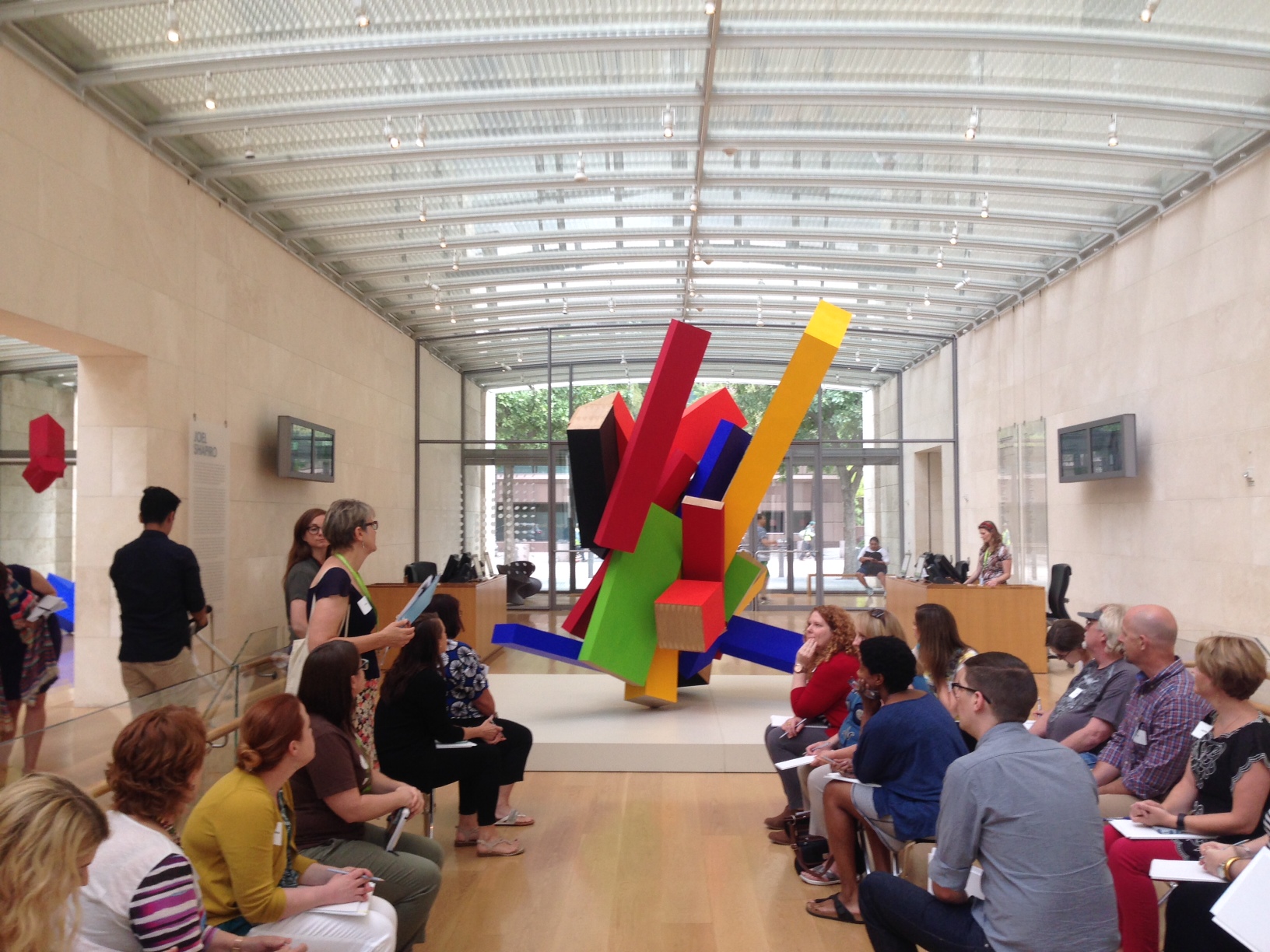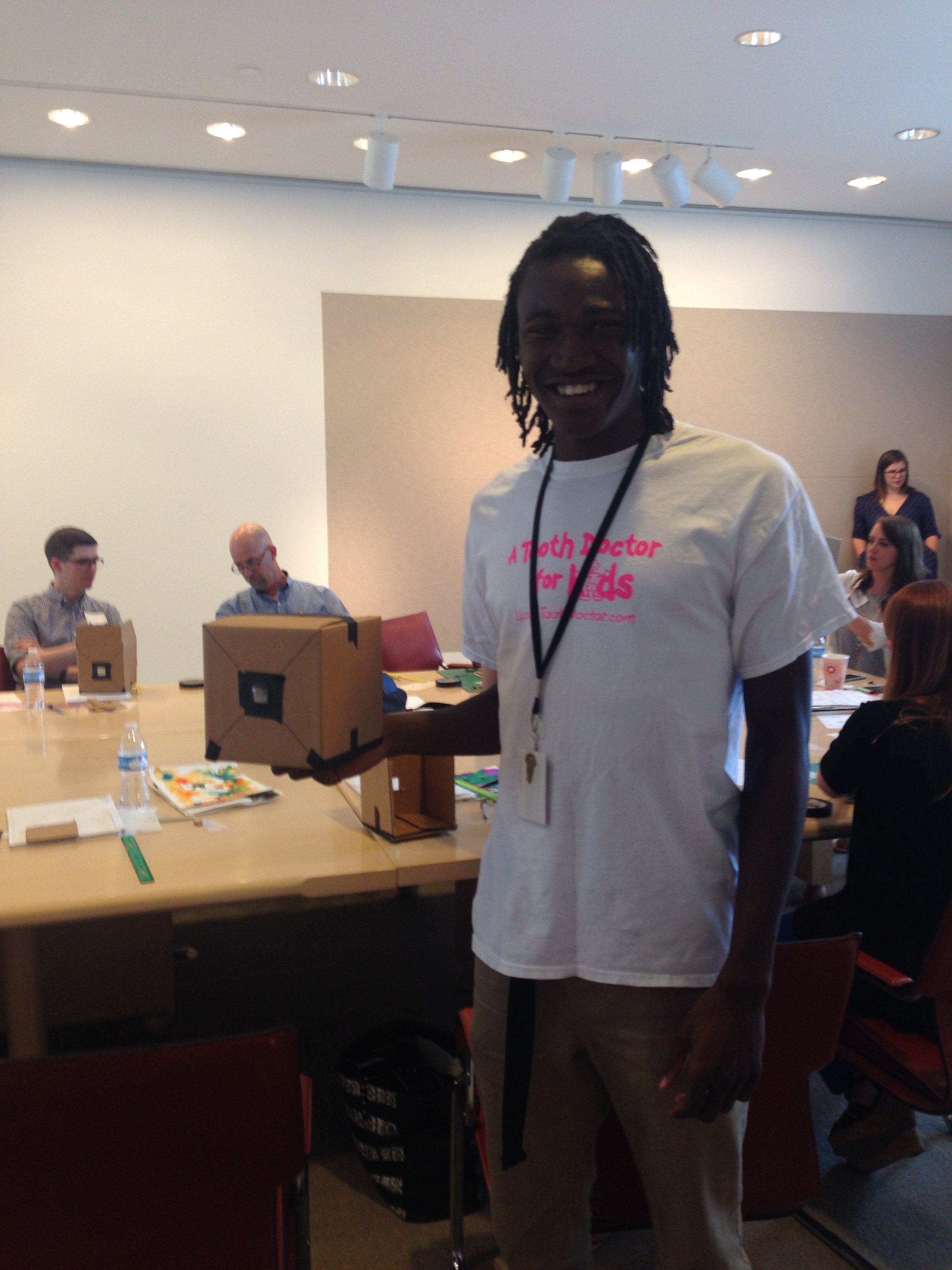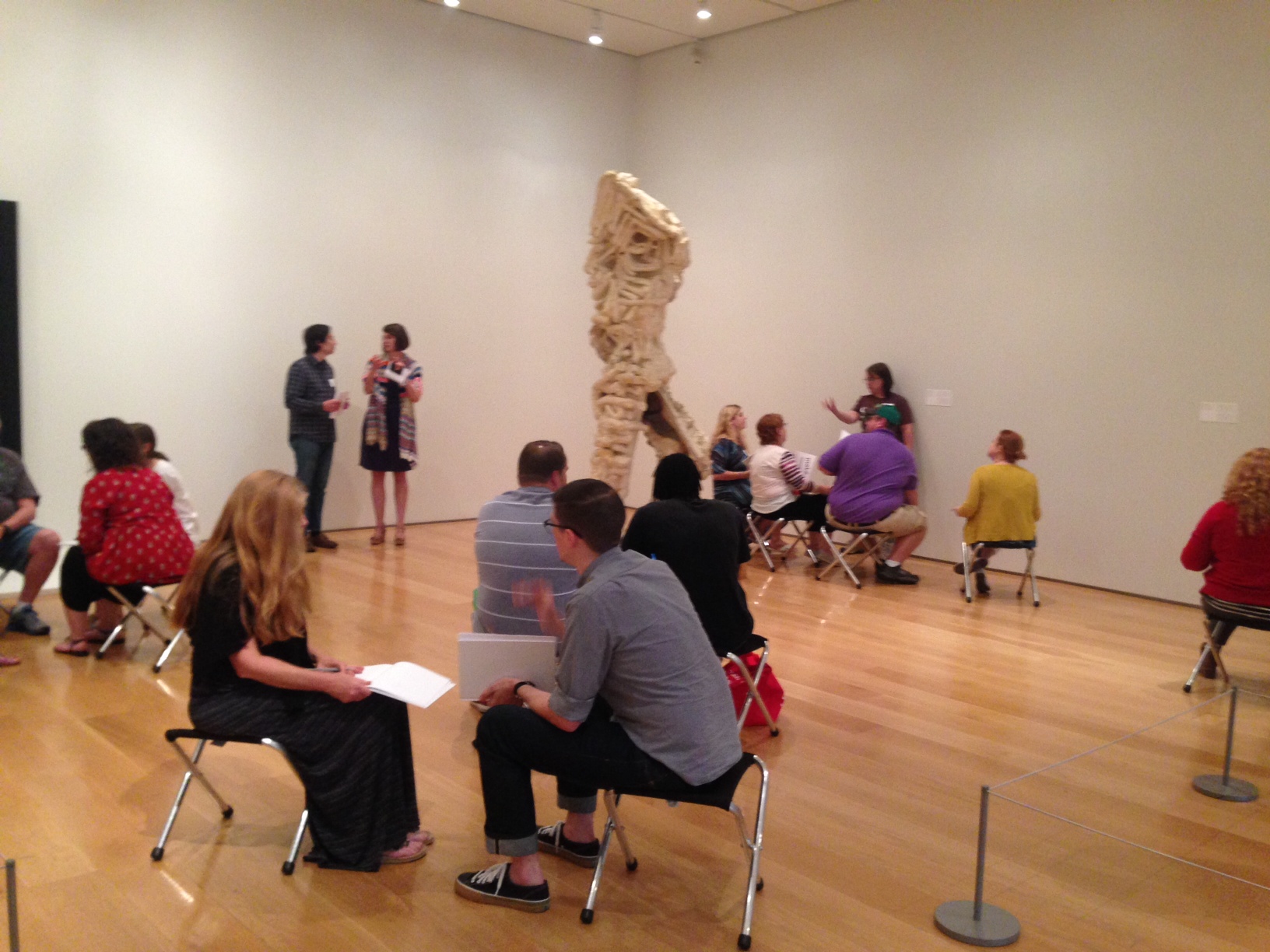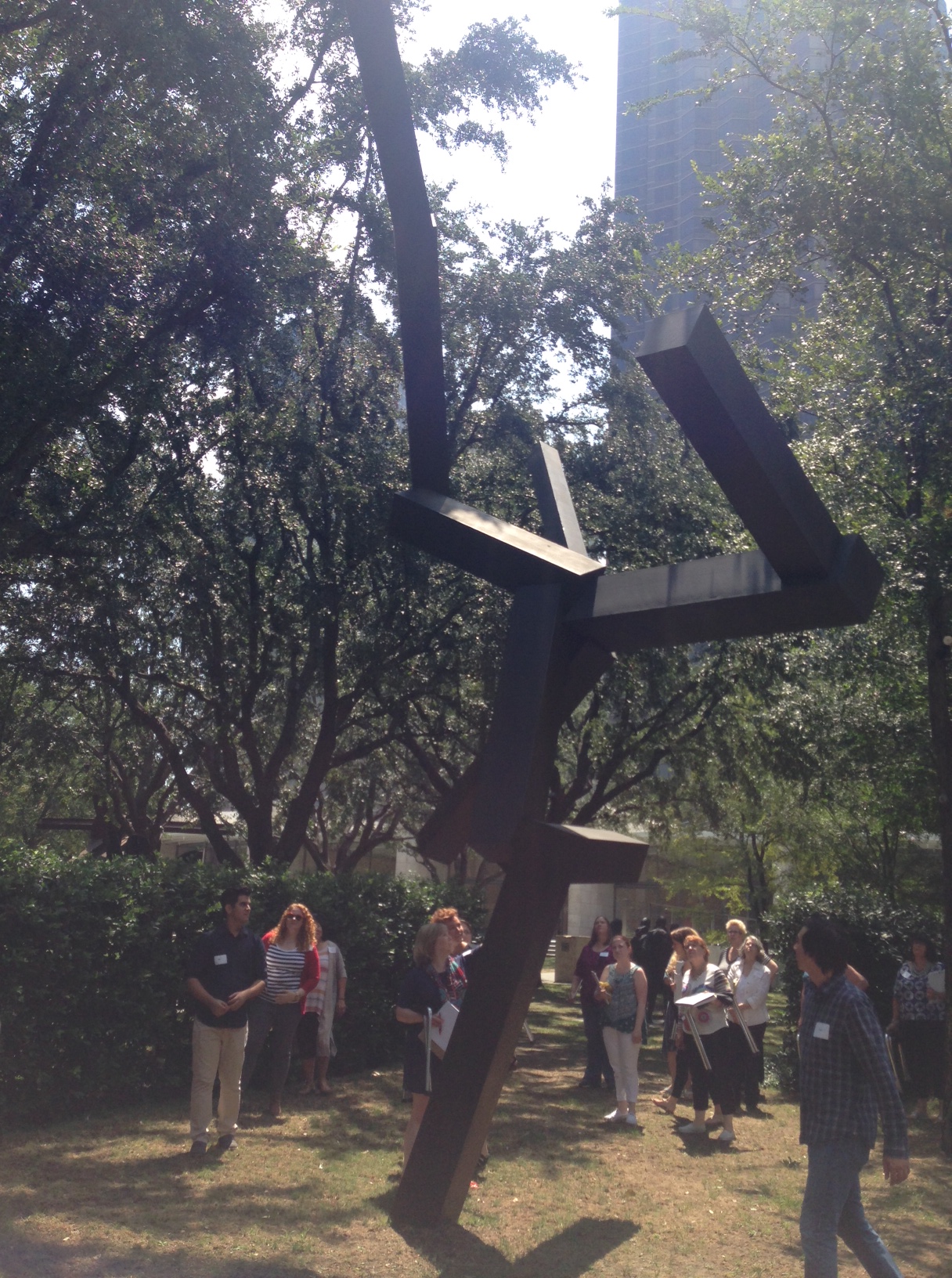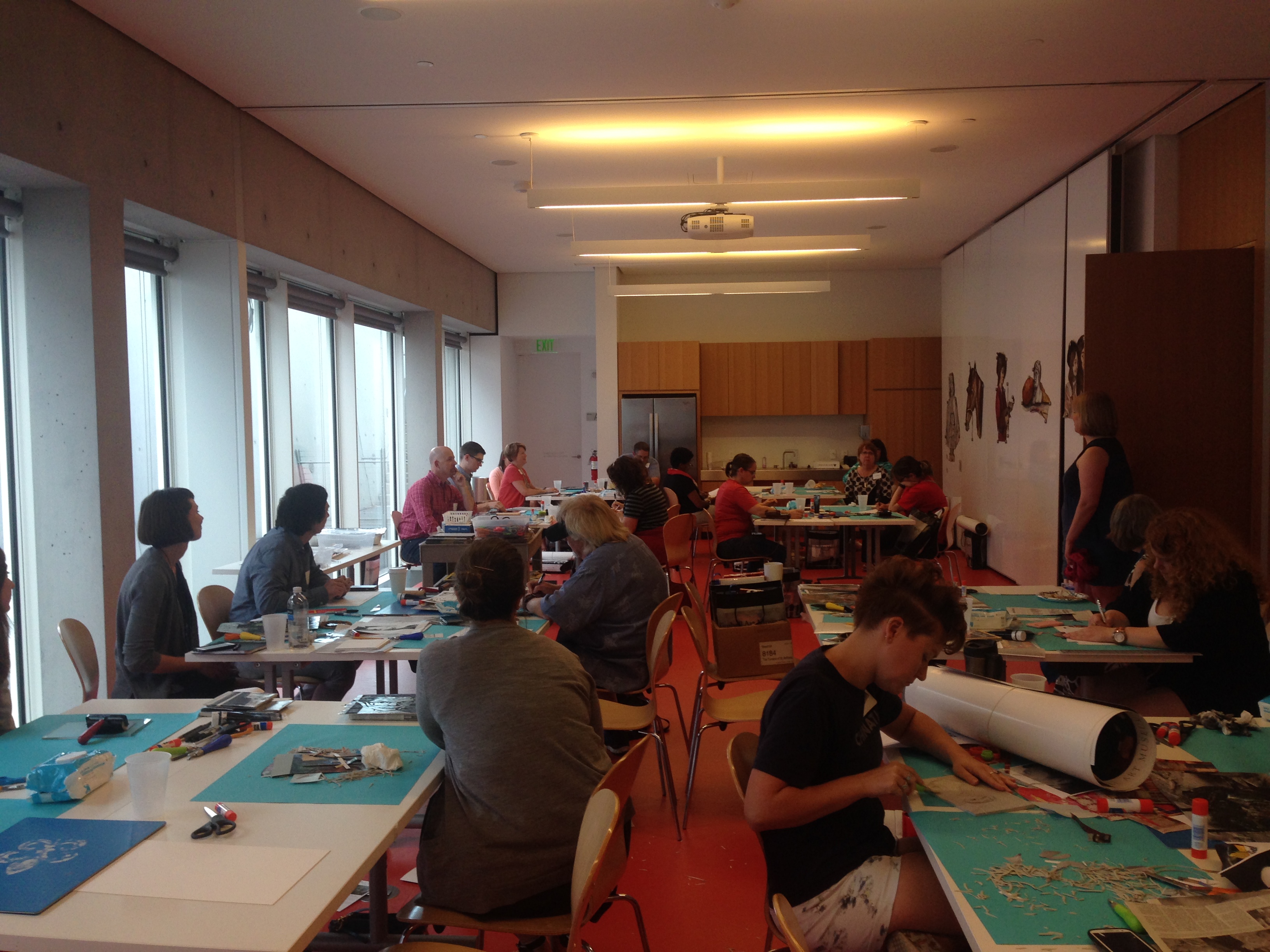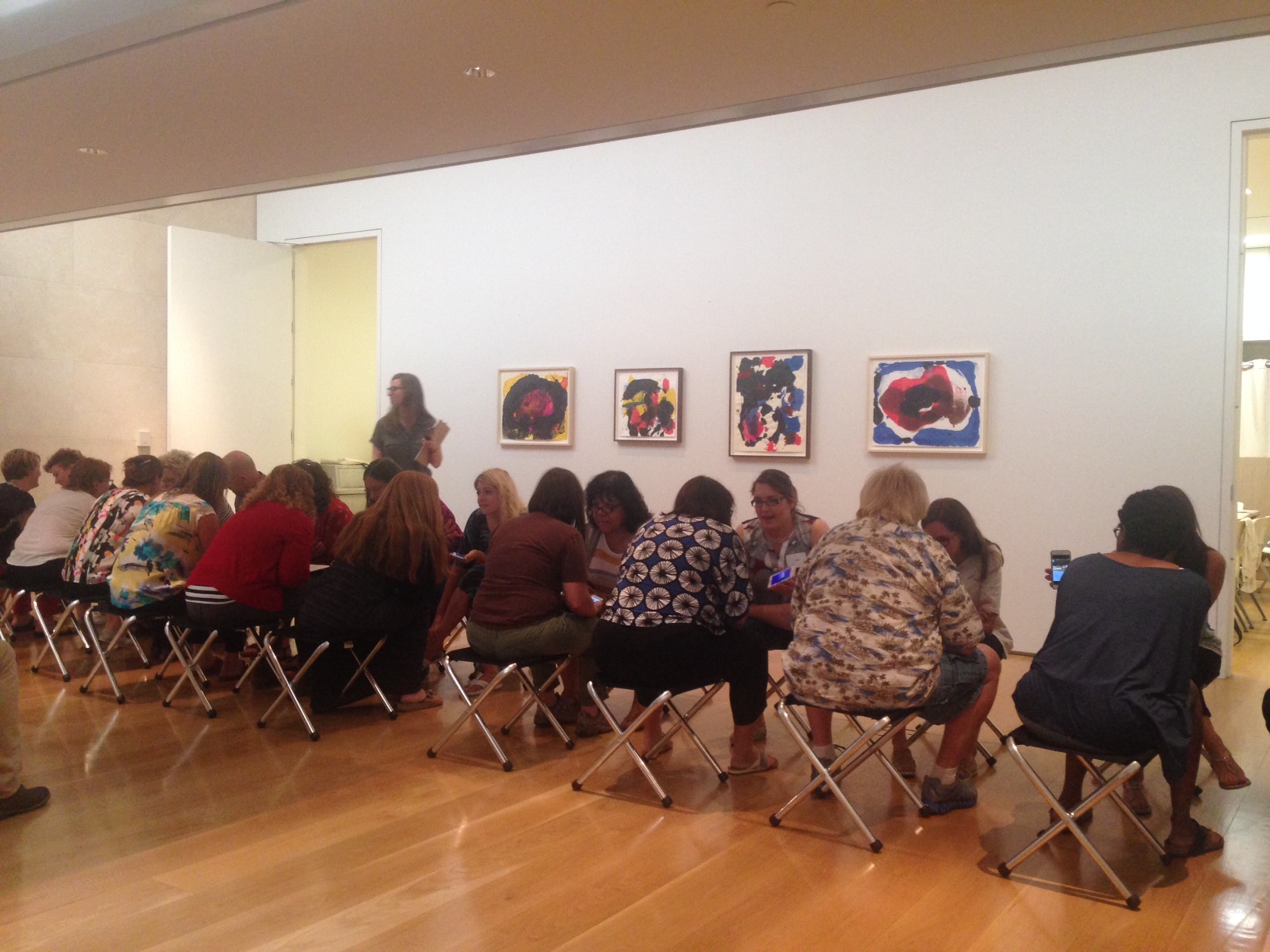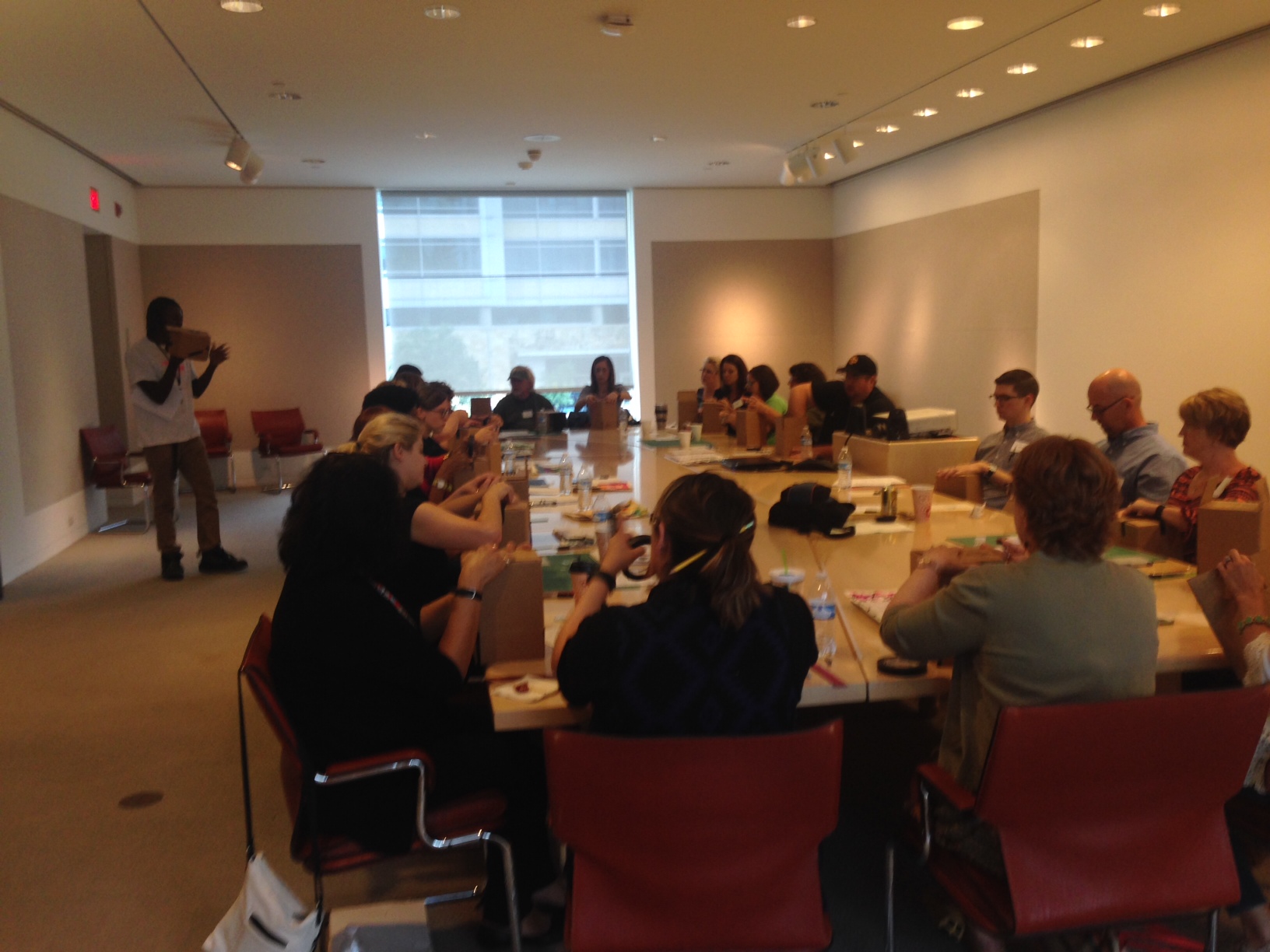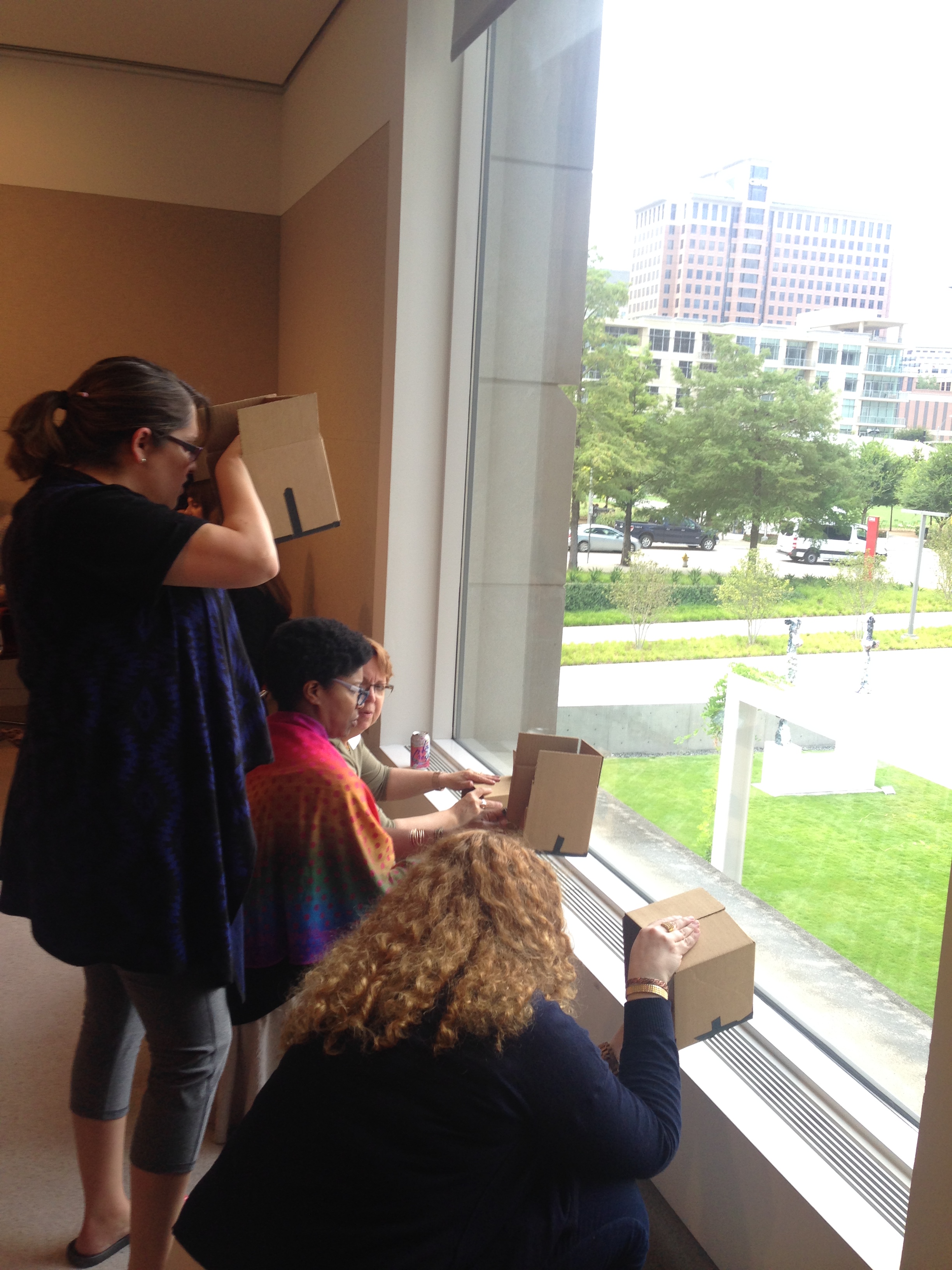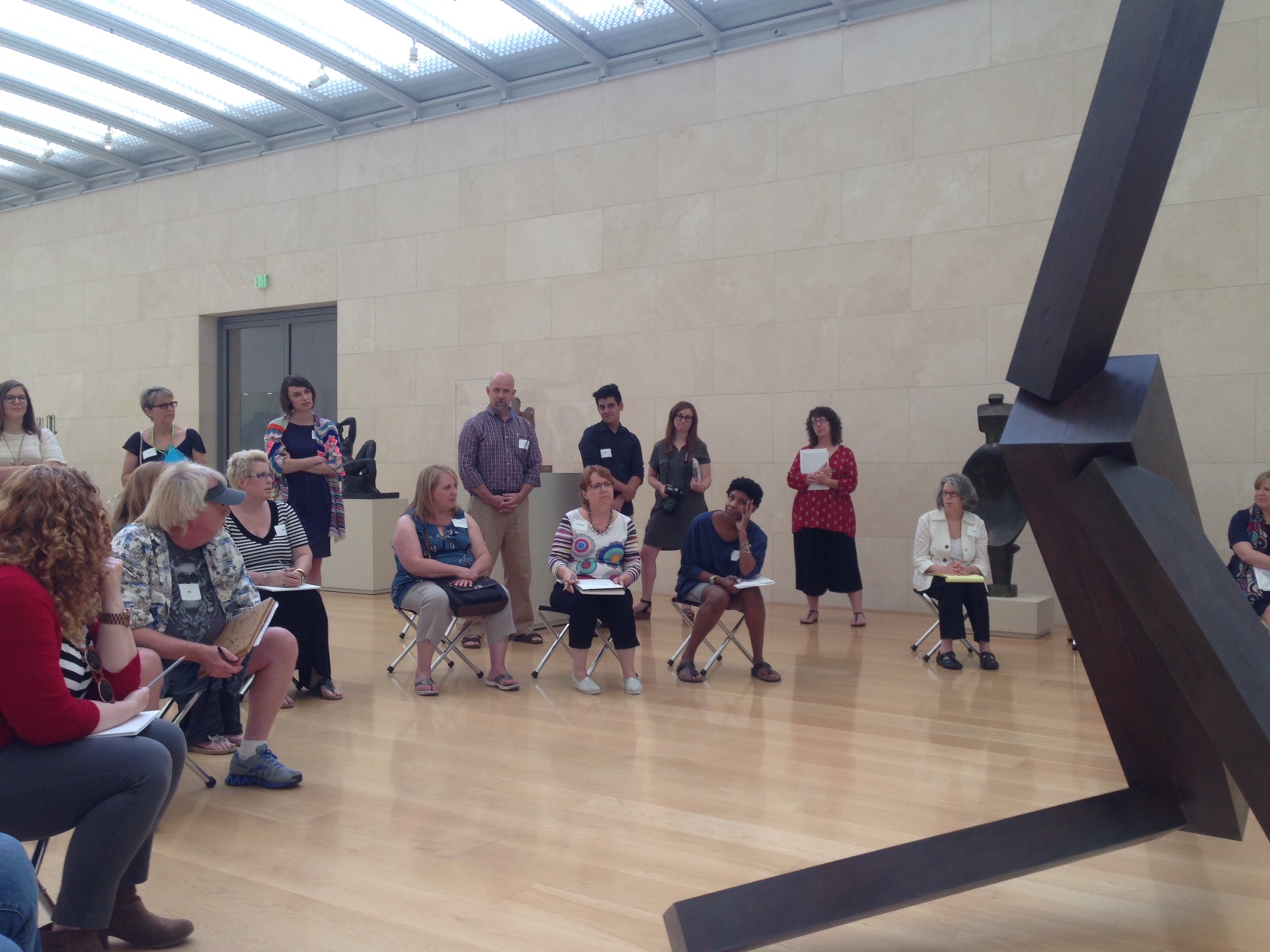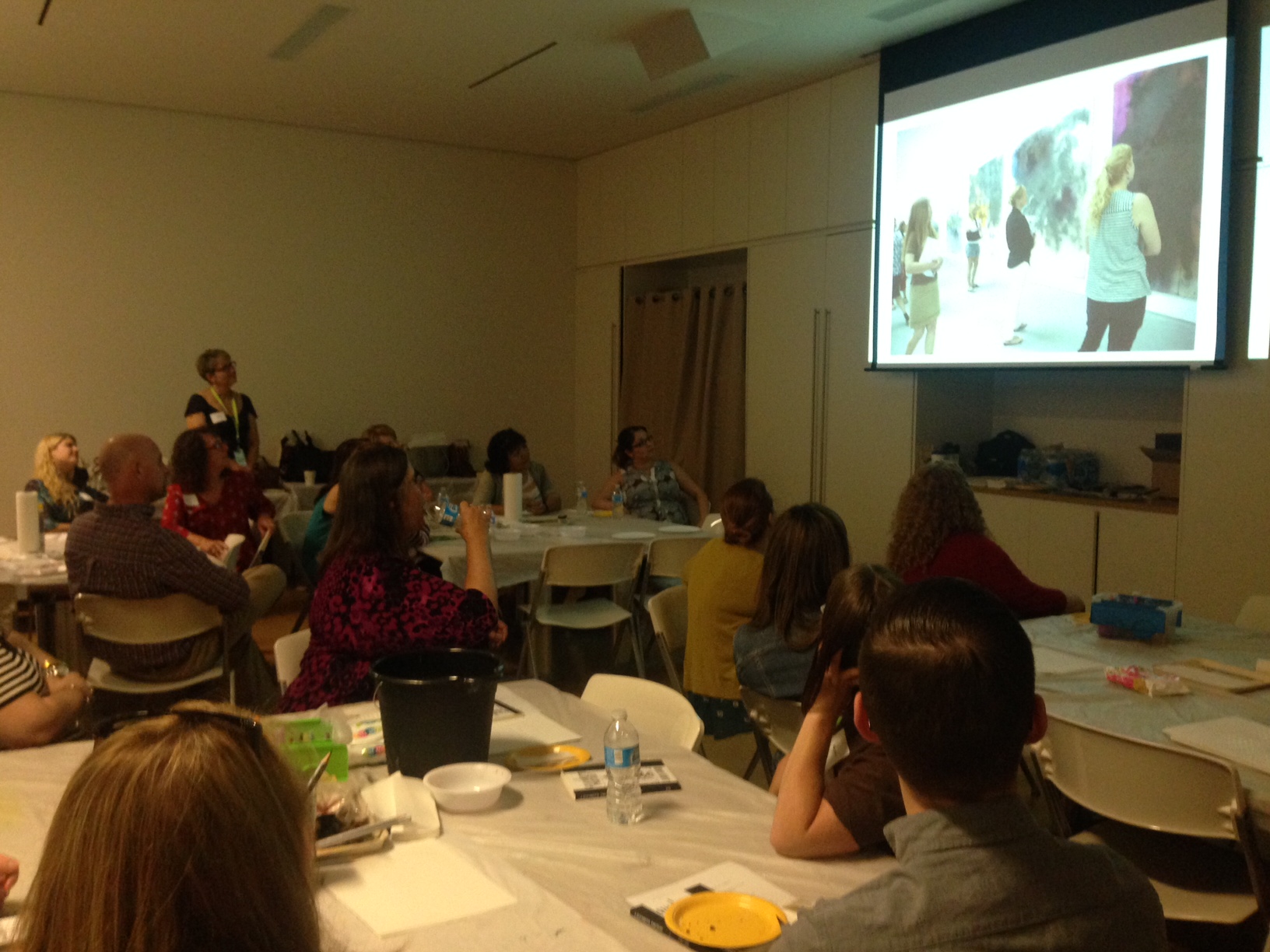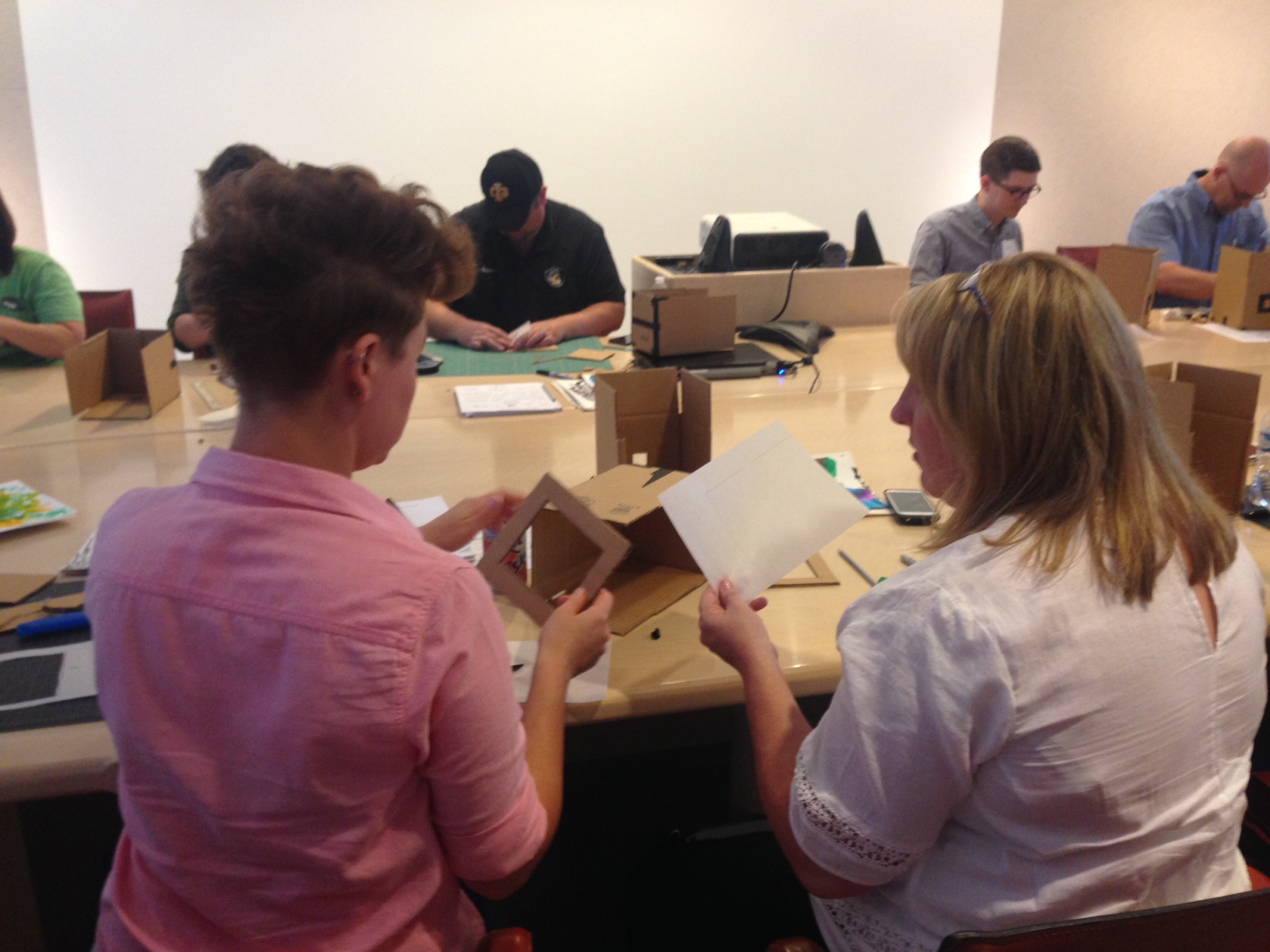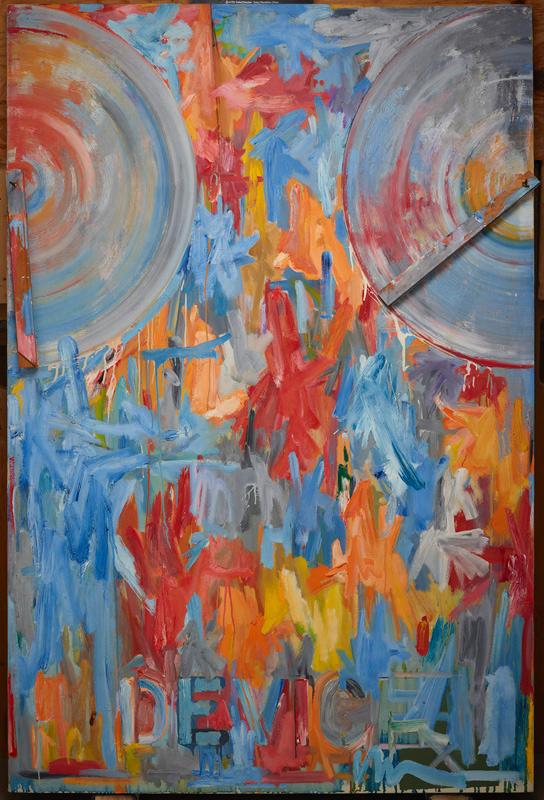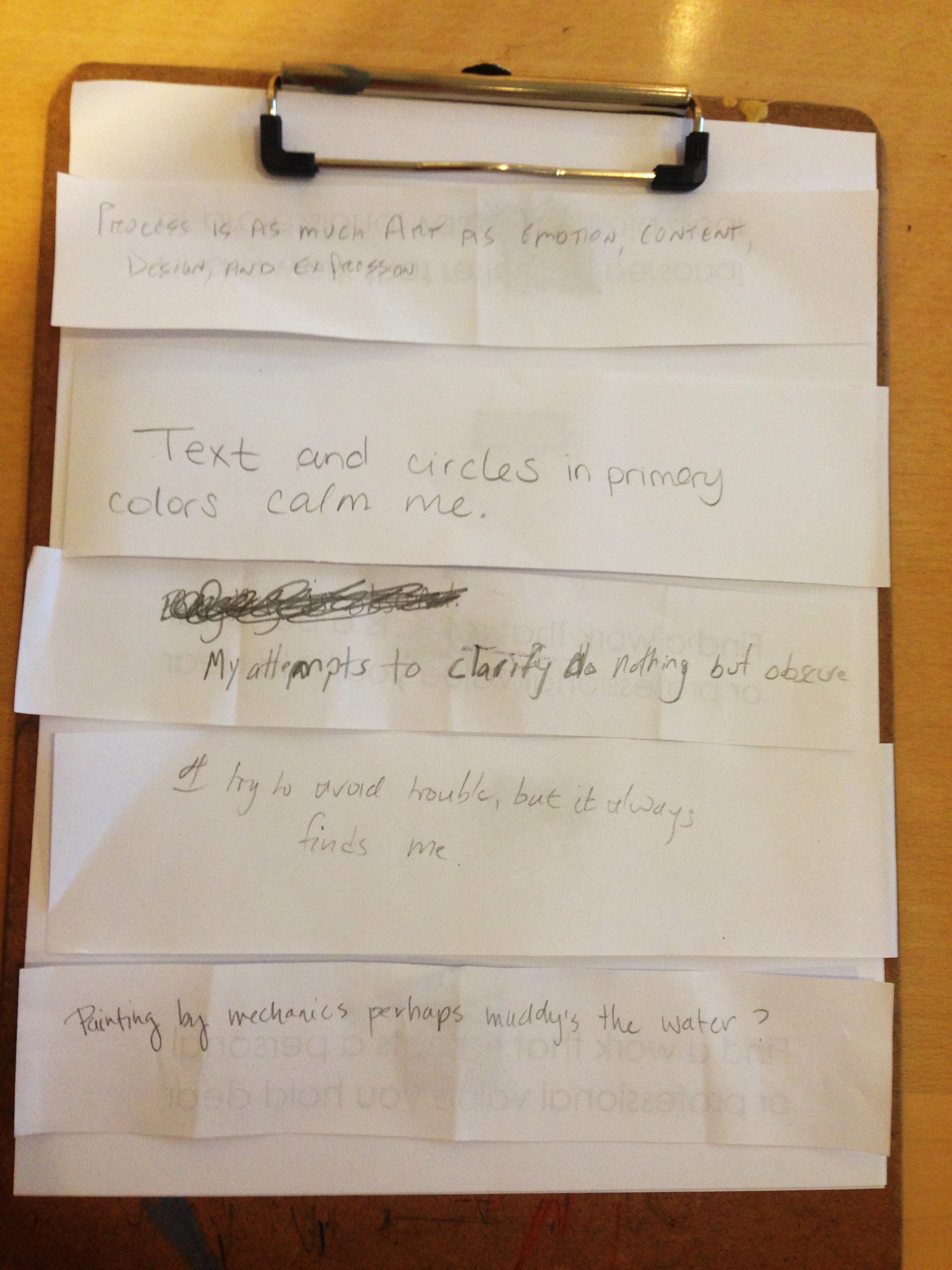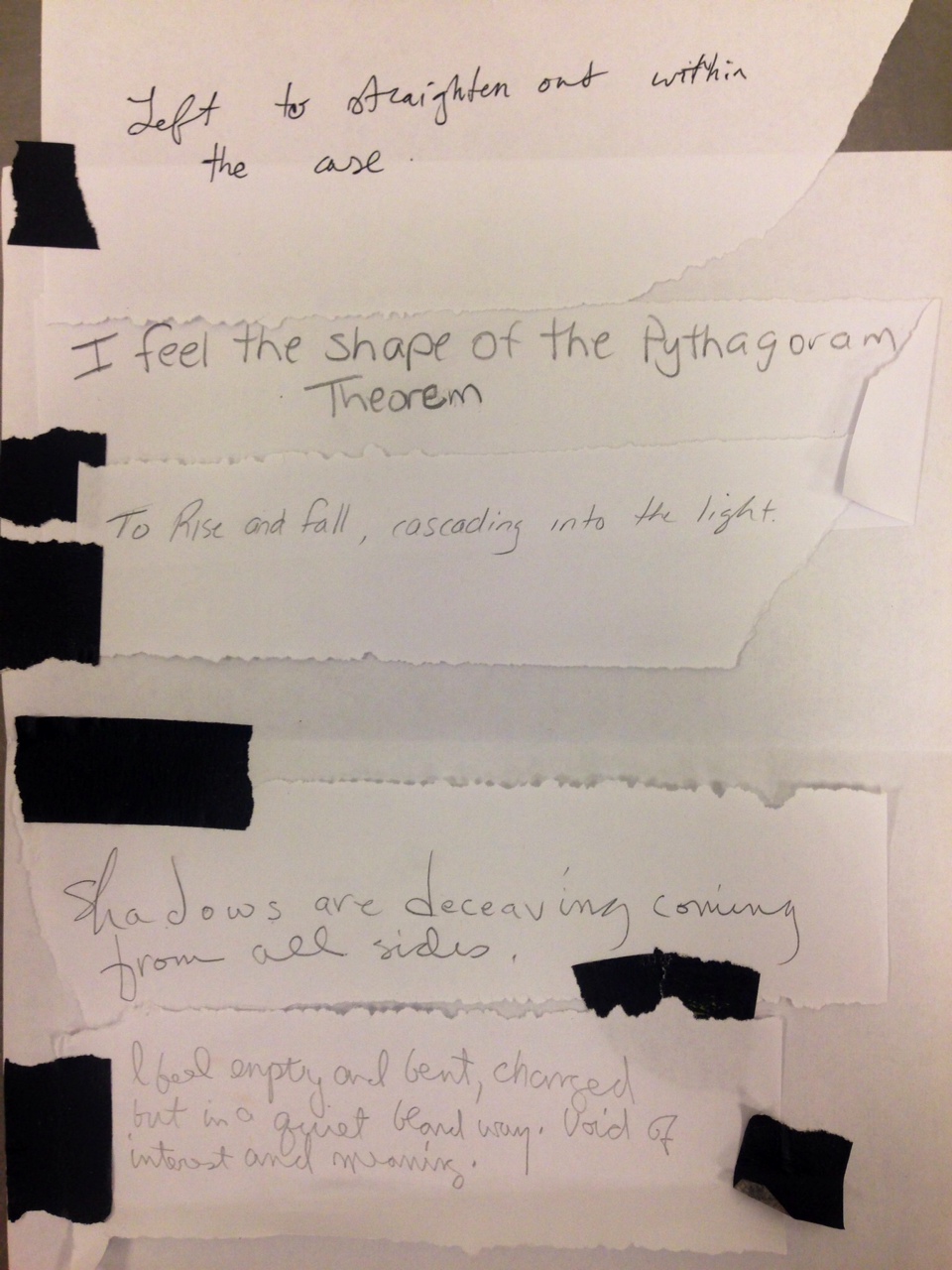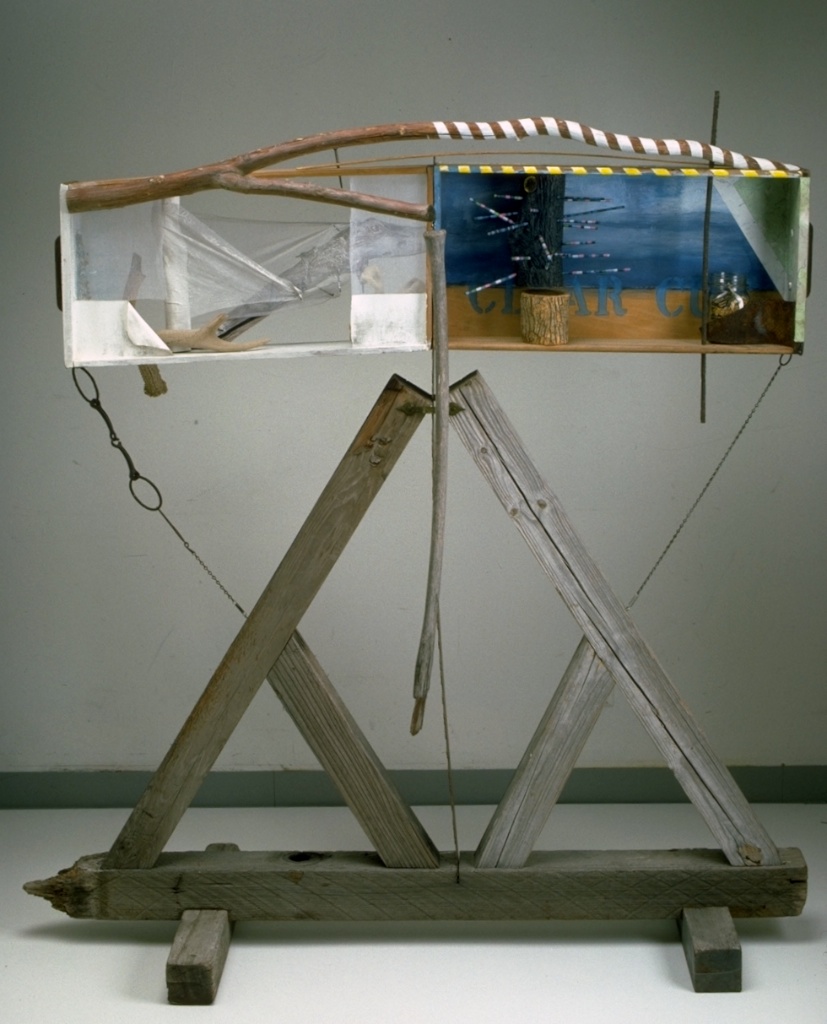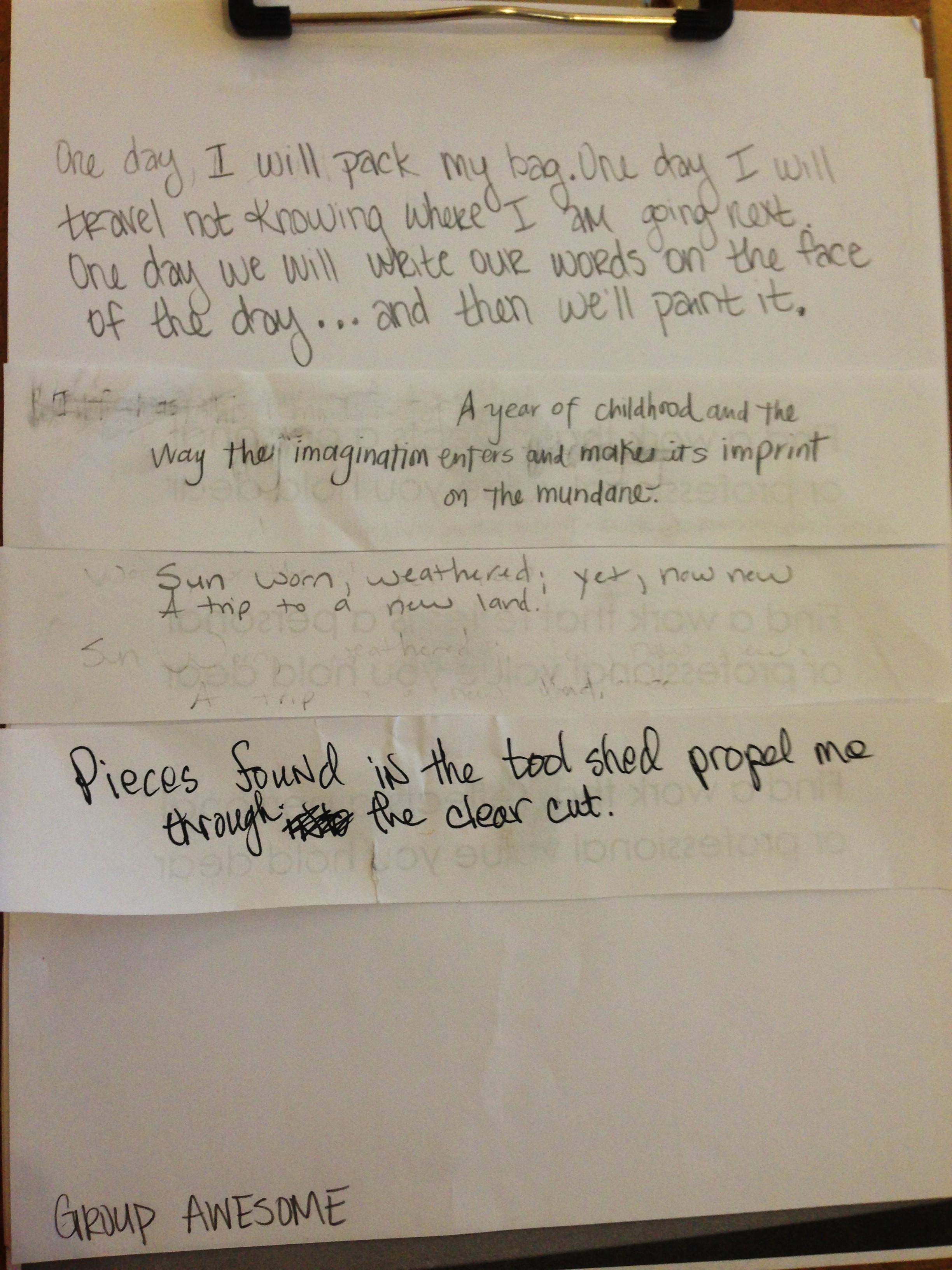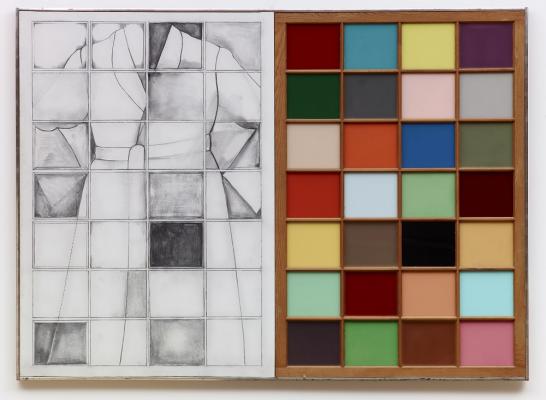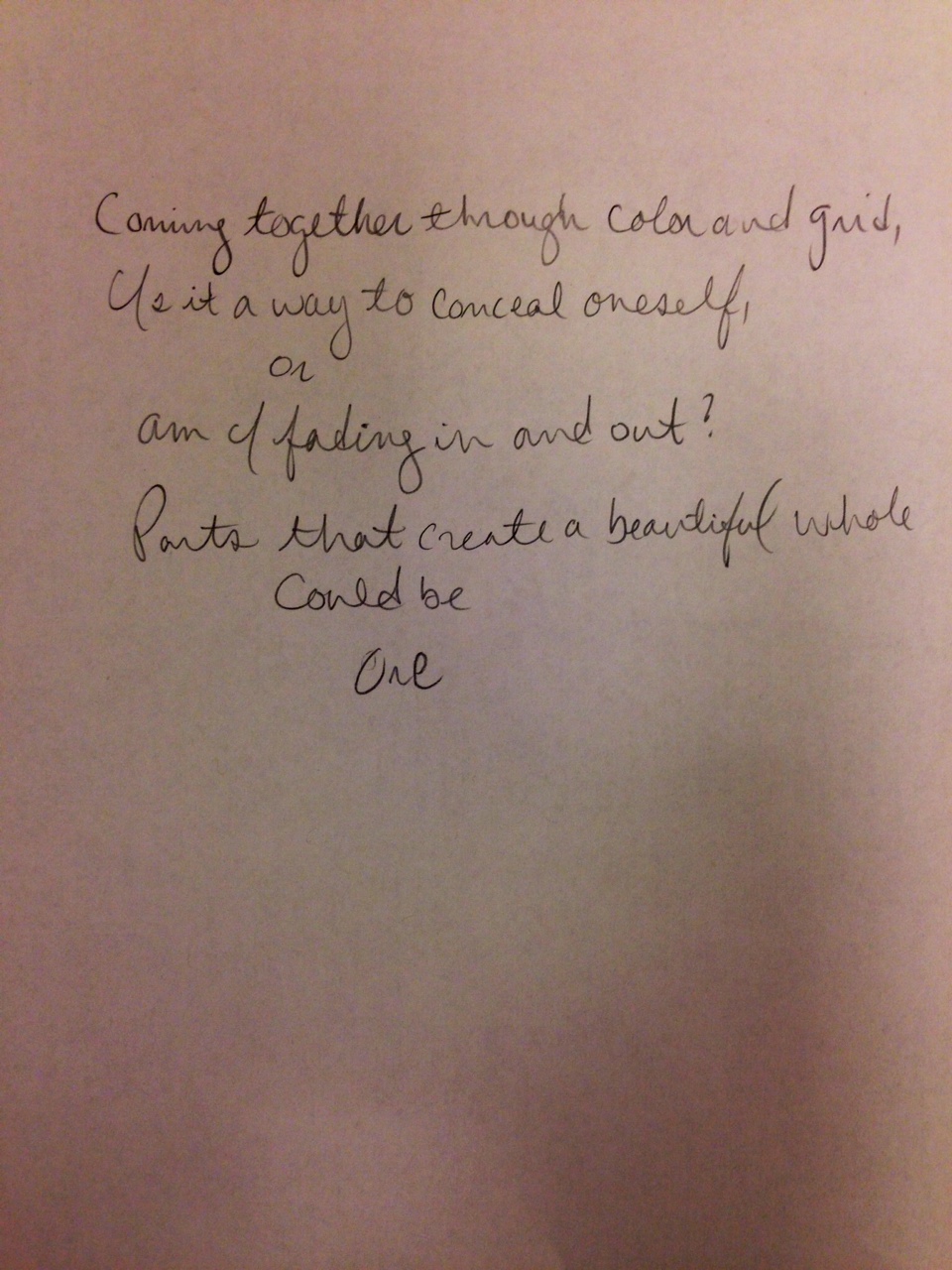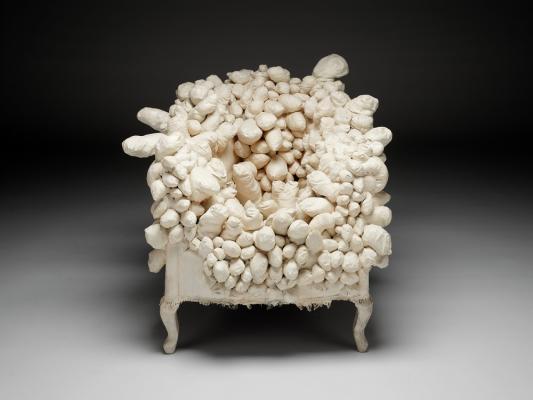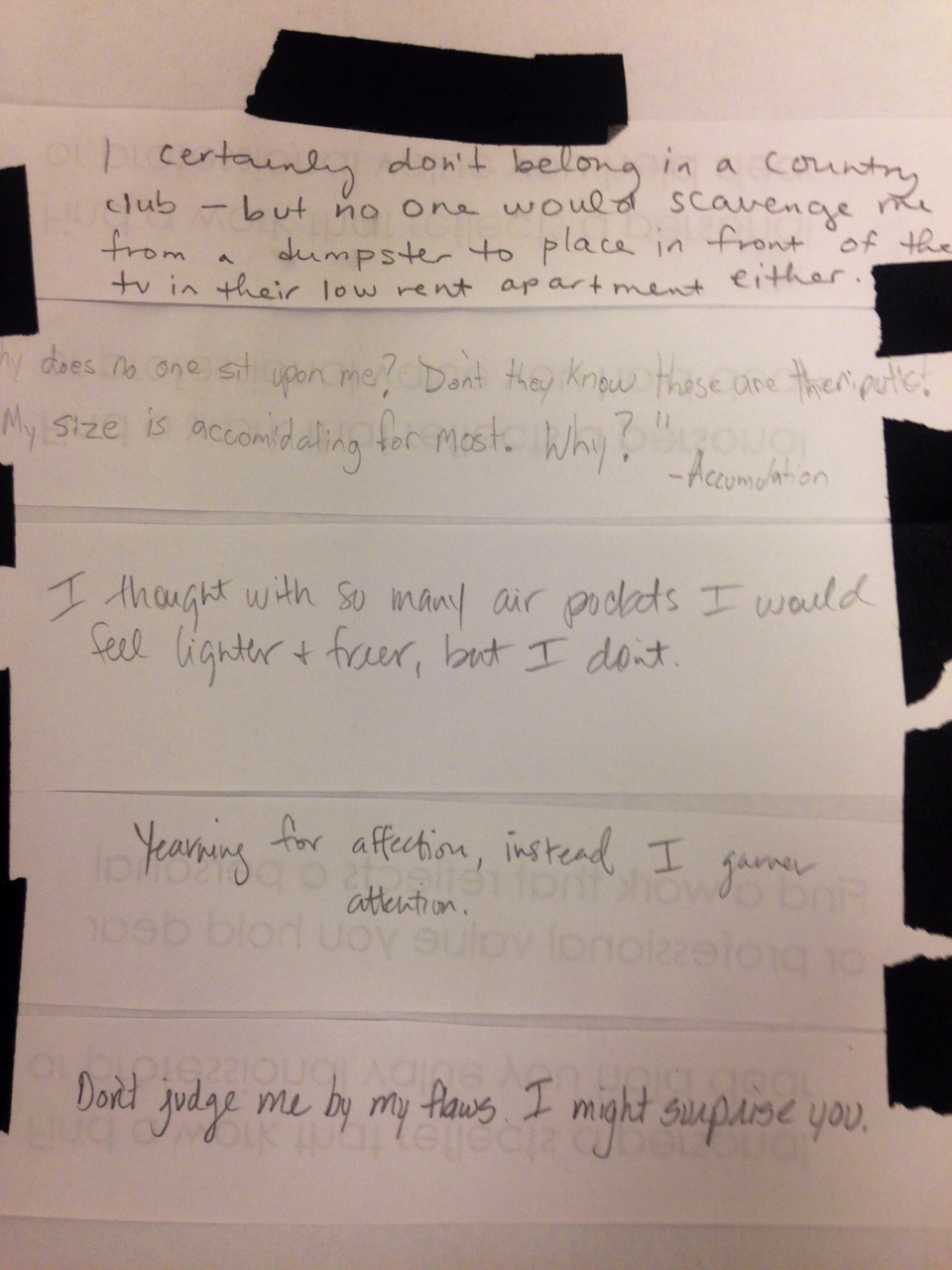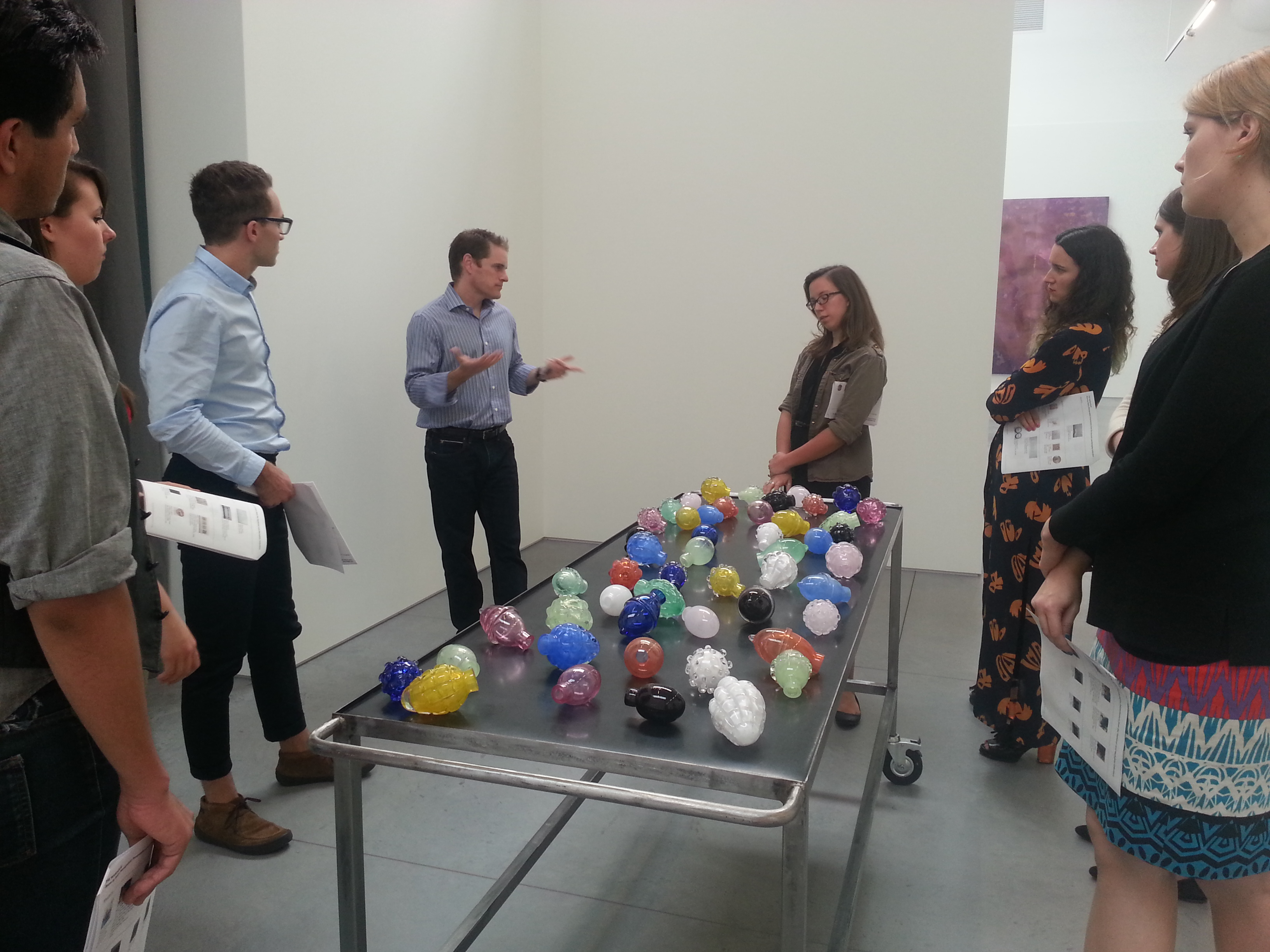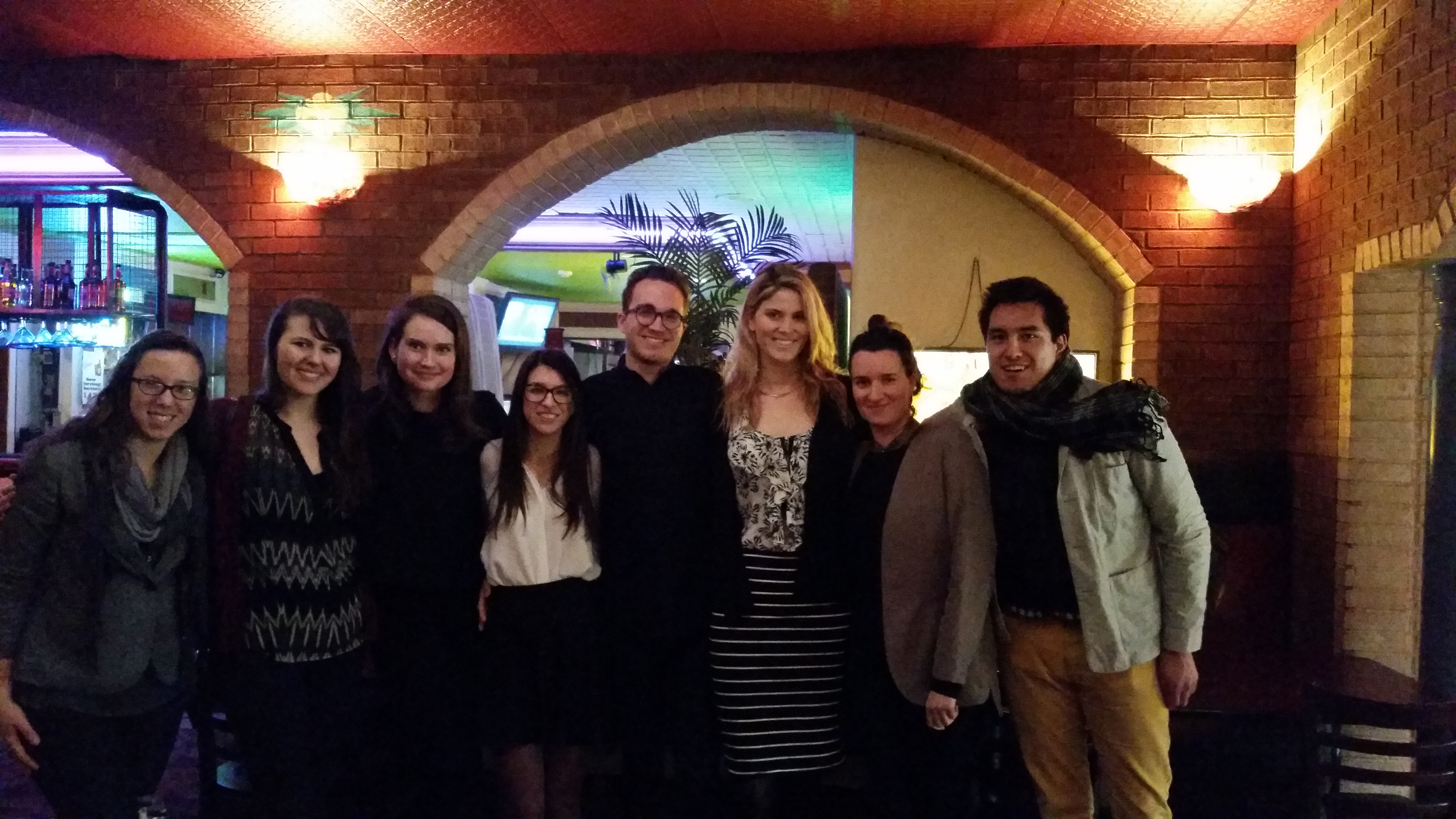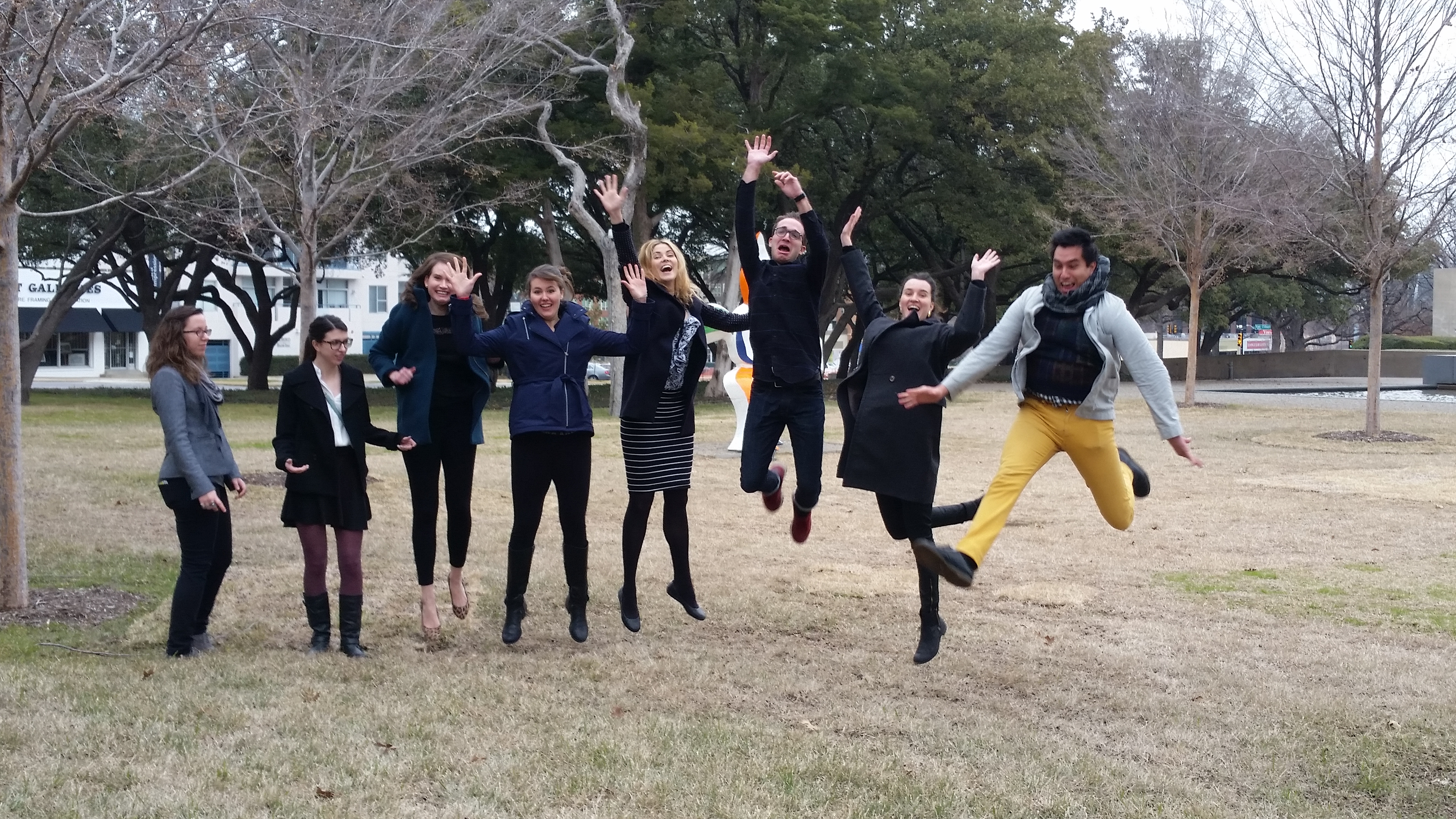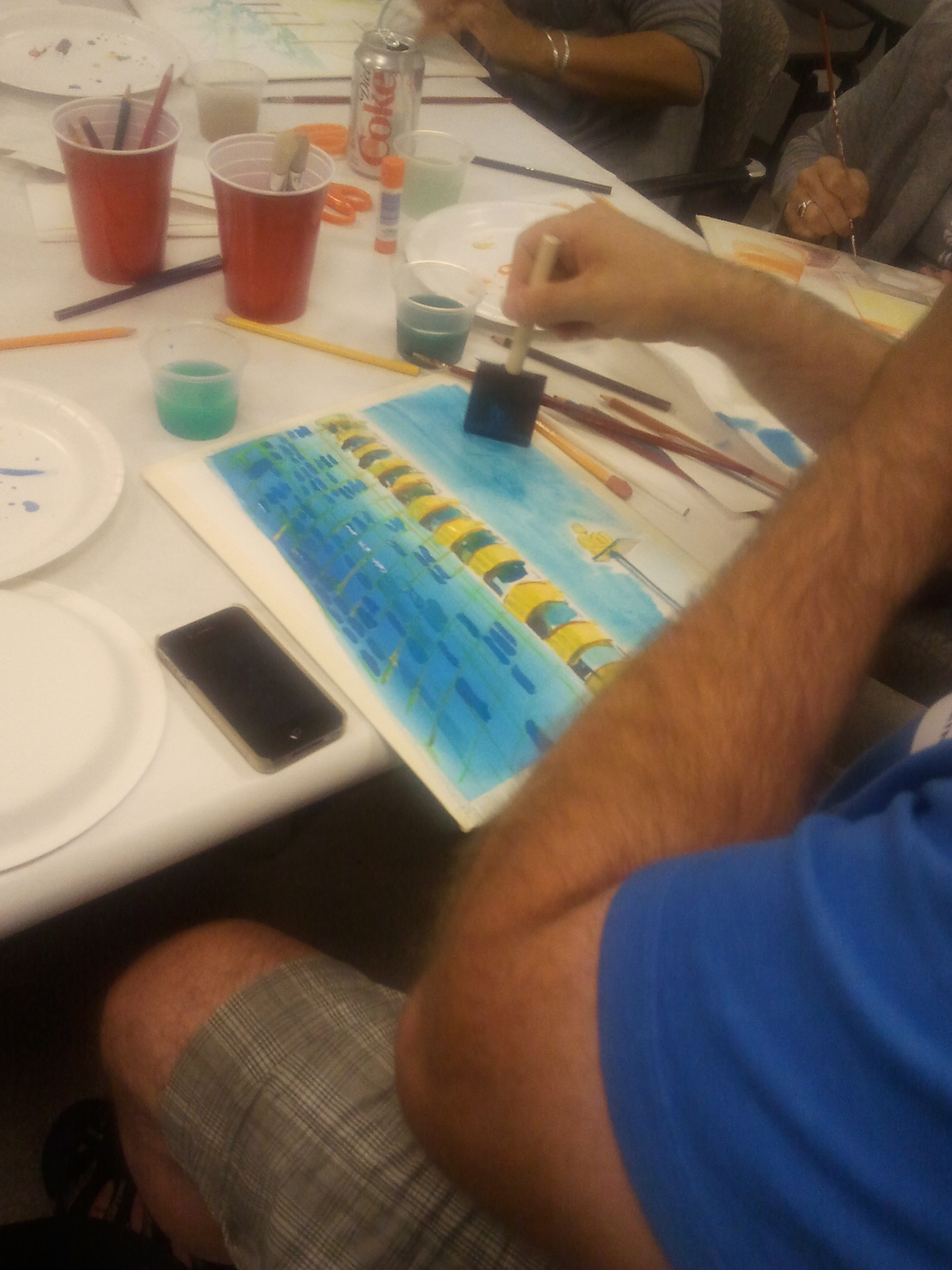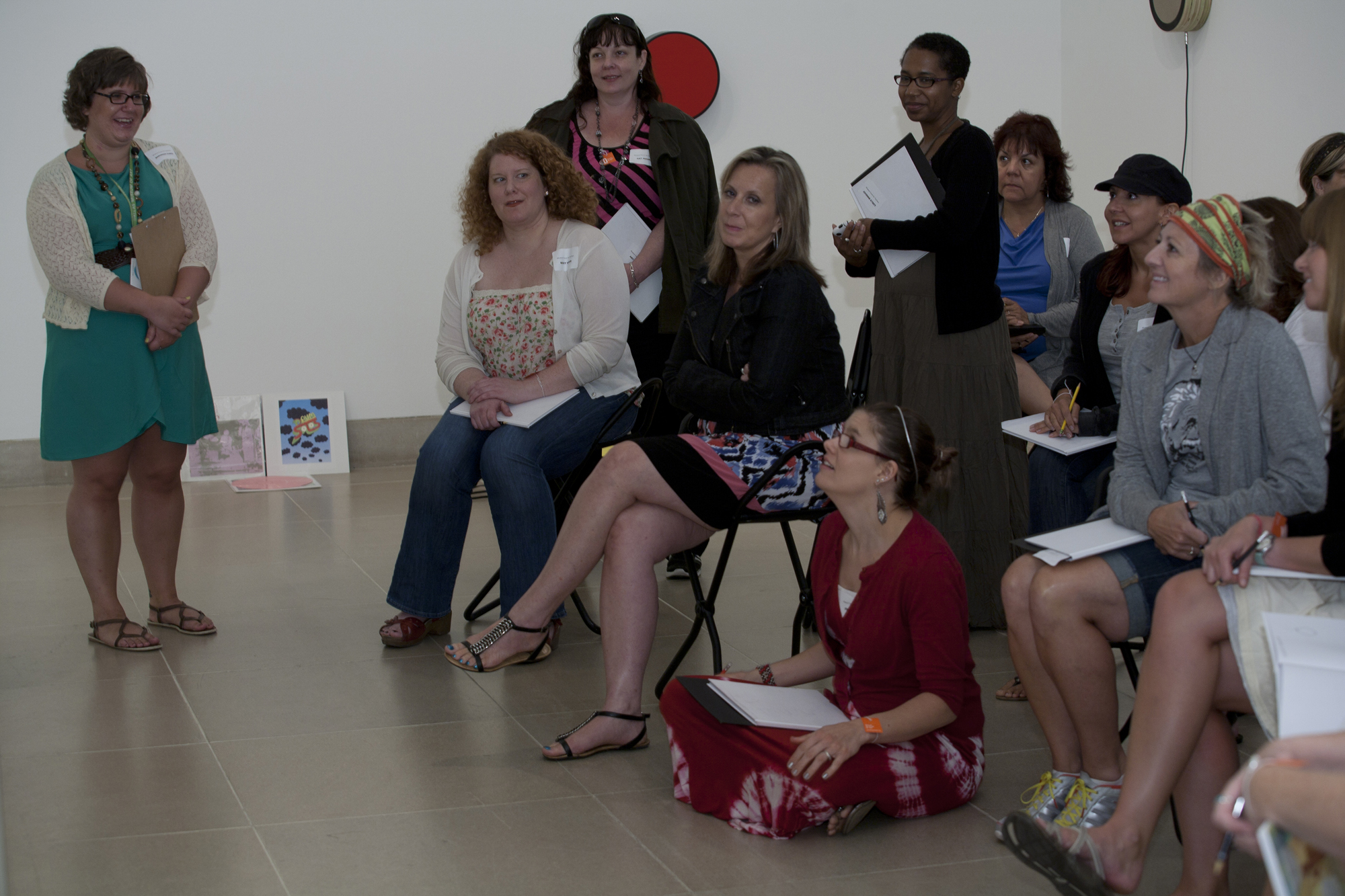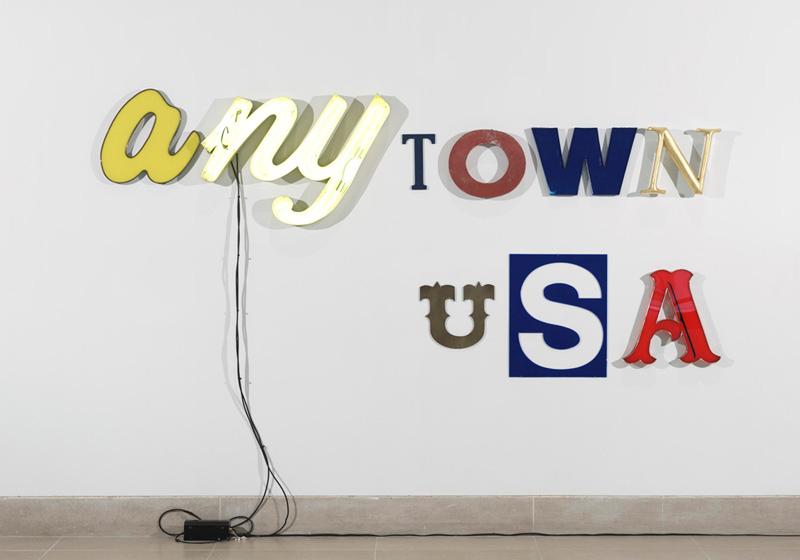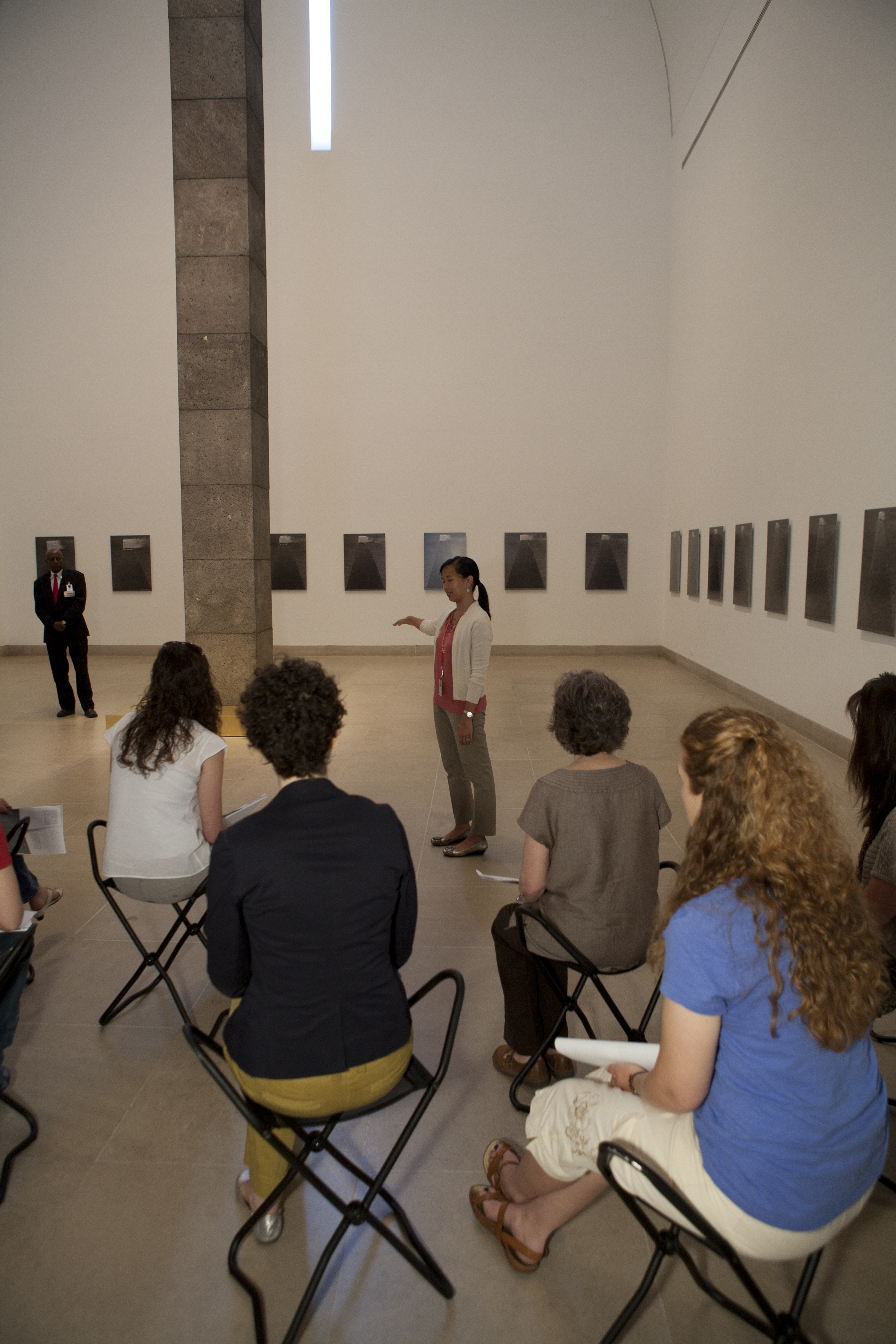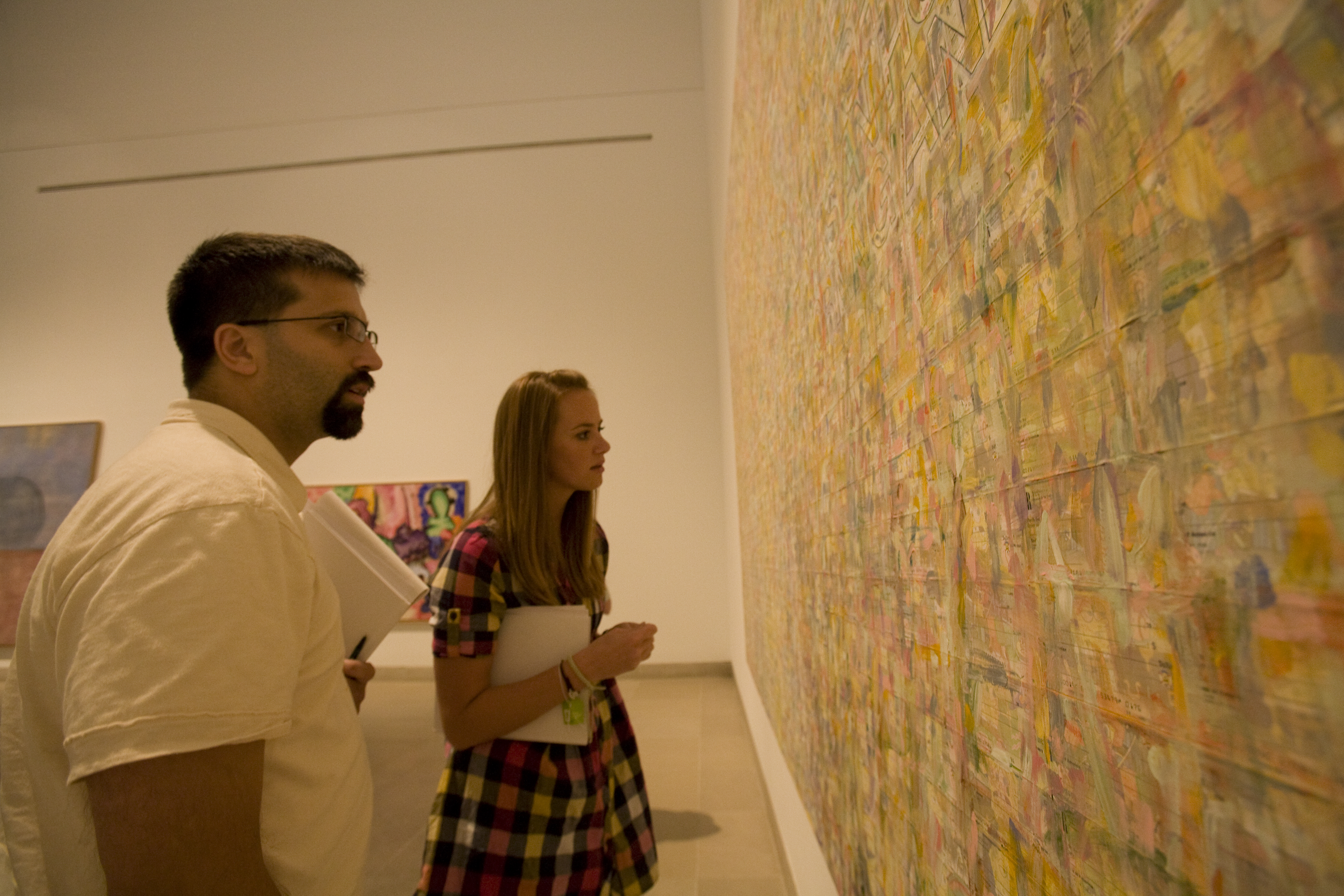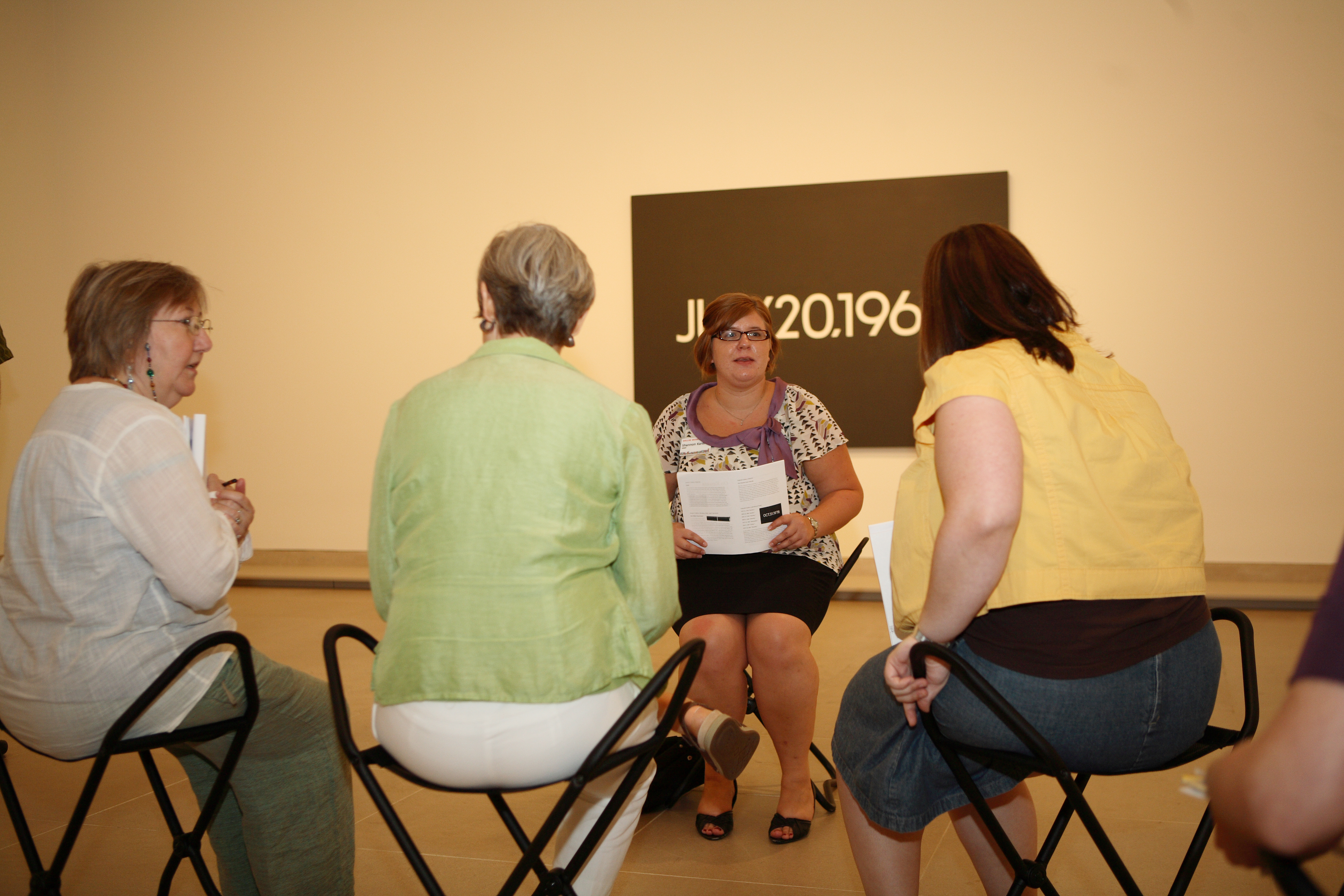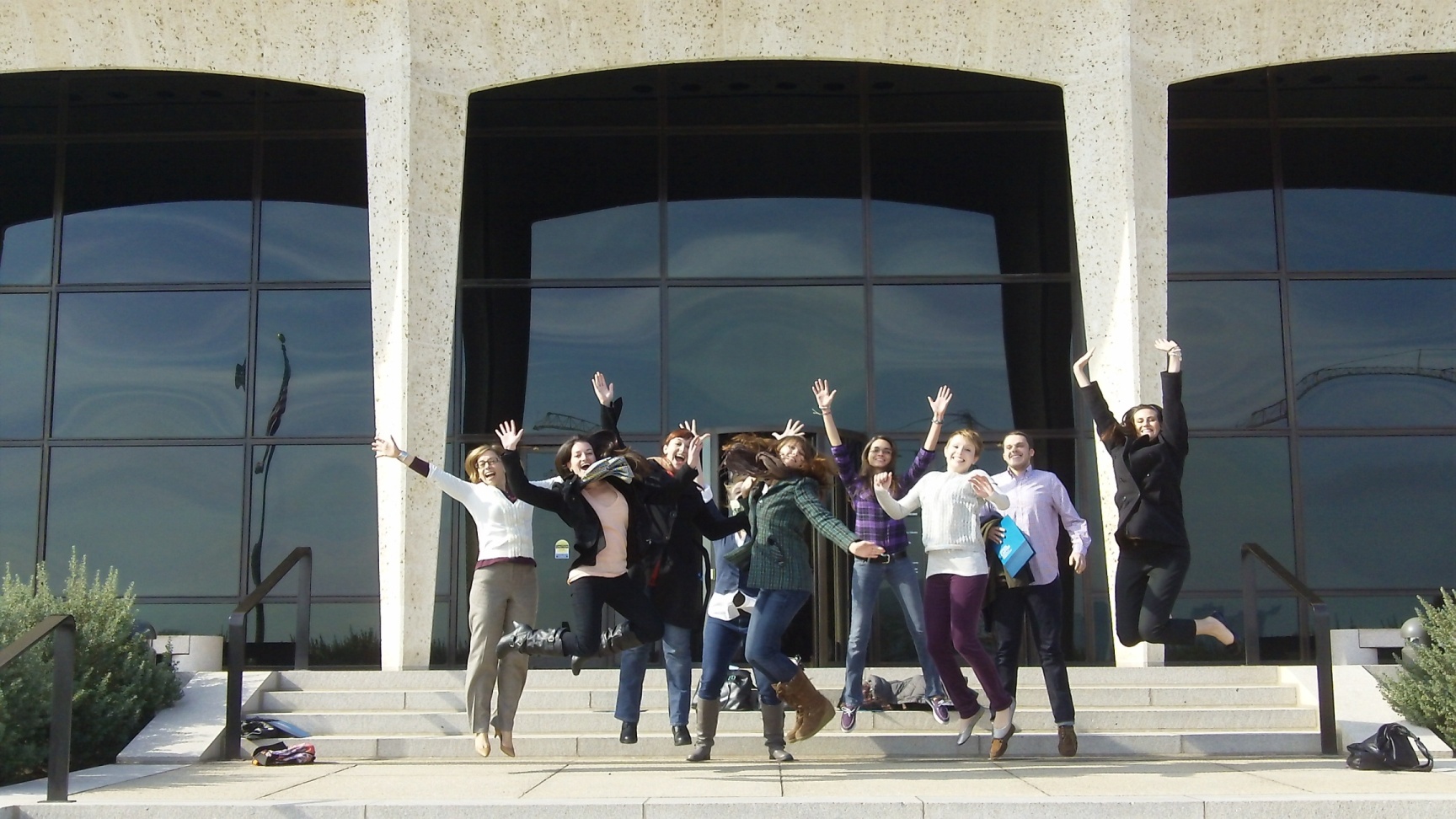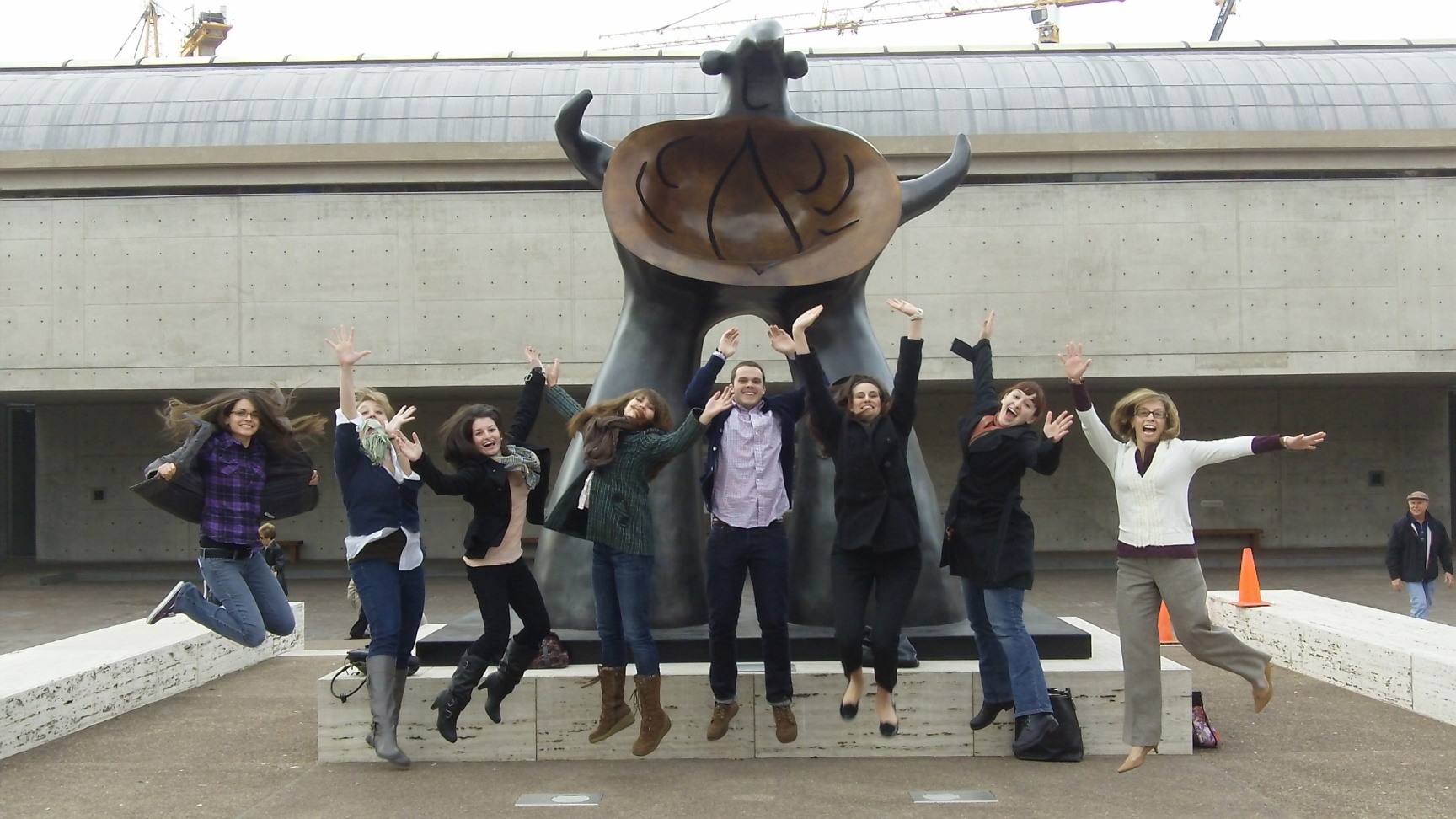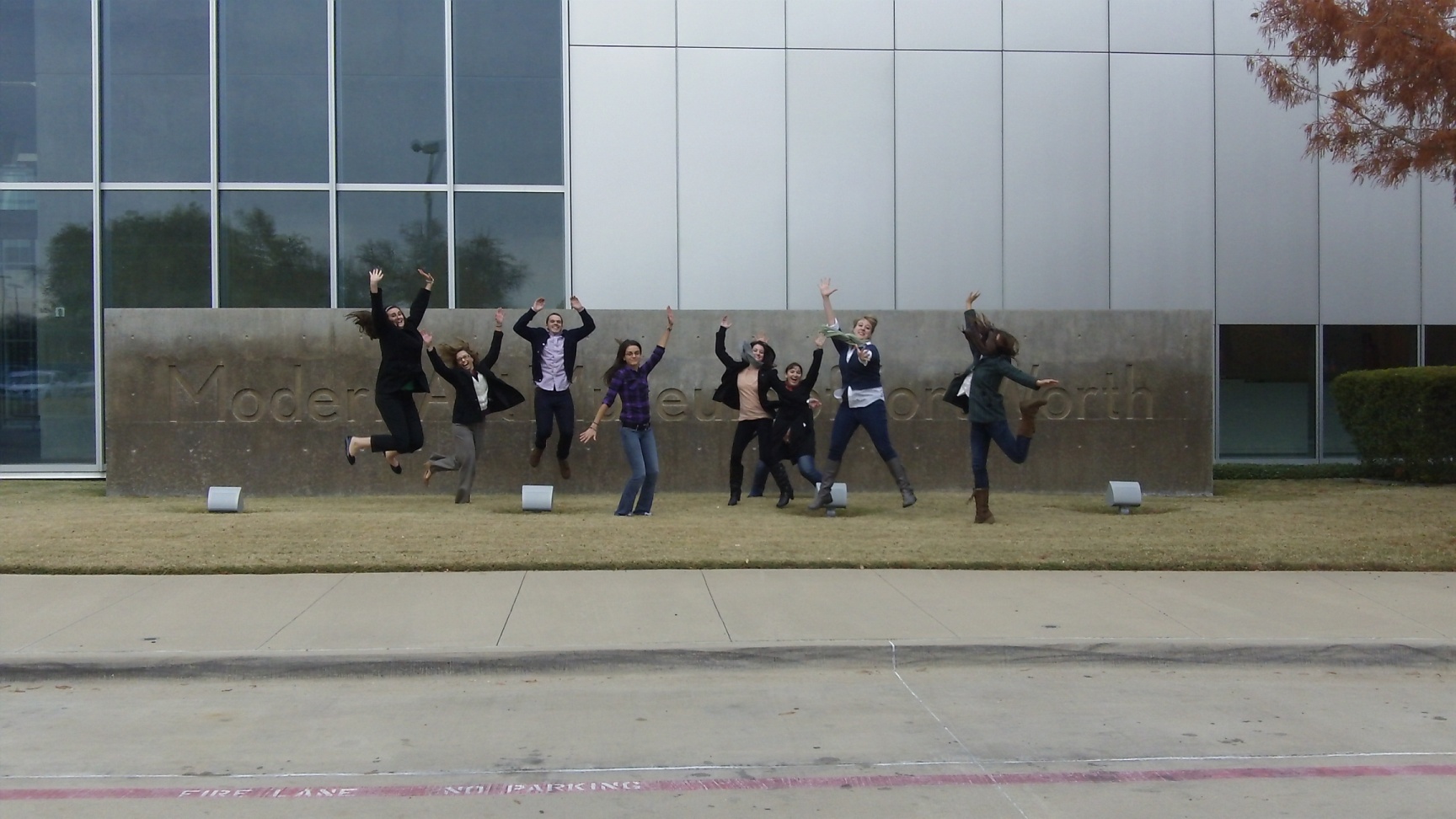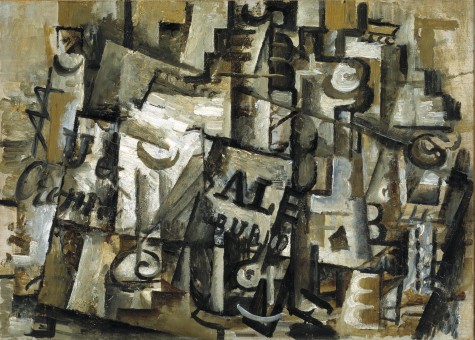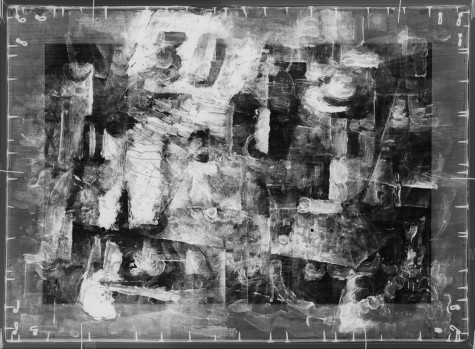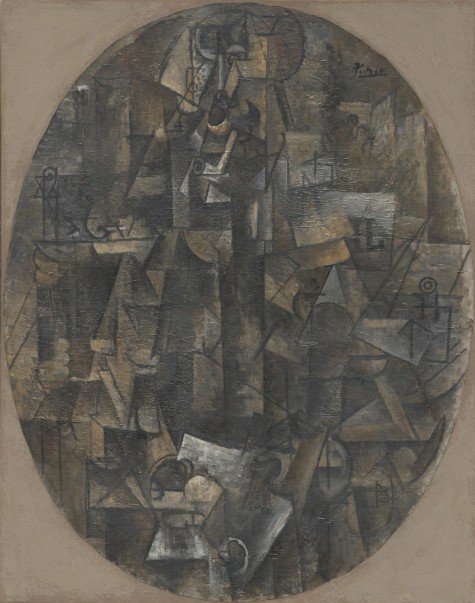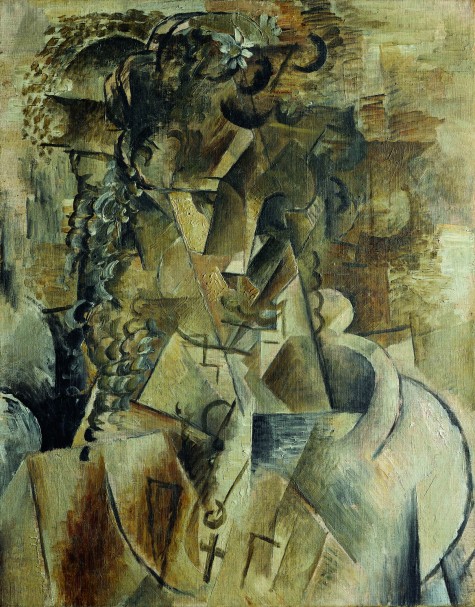The art education-extravaganza that is Museum Forum for Teachers holds the distinction of being one of my favorite weeks of the summer. Each year, The Warehouse, Nasher Sculpture Center, Modern Art Museum of Fort Worth, Kimbell Art Museum, and the Dallas Museum of Art work together to coordinate a week-long workshop dedicated to helping classroom teachers deepen their understanding of modern and contemporary art and develop strategies to teach, interpret, and use works of art in the classroom and in museum galleries. Best of all, each institution hosts one day of the week giving participants and fellow museum educators the opportunity to explore a variety of special exhibitions, collections, and experience different teaching styles. It’s well worth braving traffic across the Metroplex to experience the richness of DFW’s museum community!
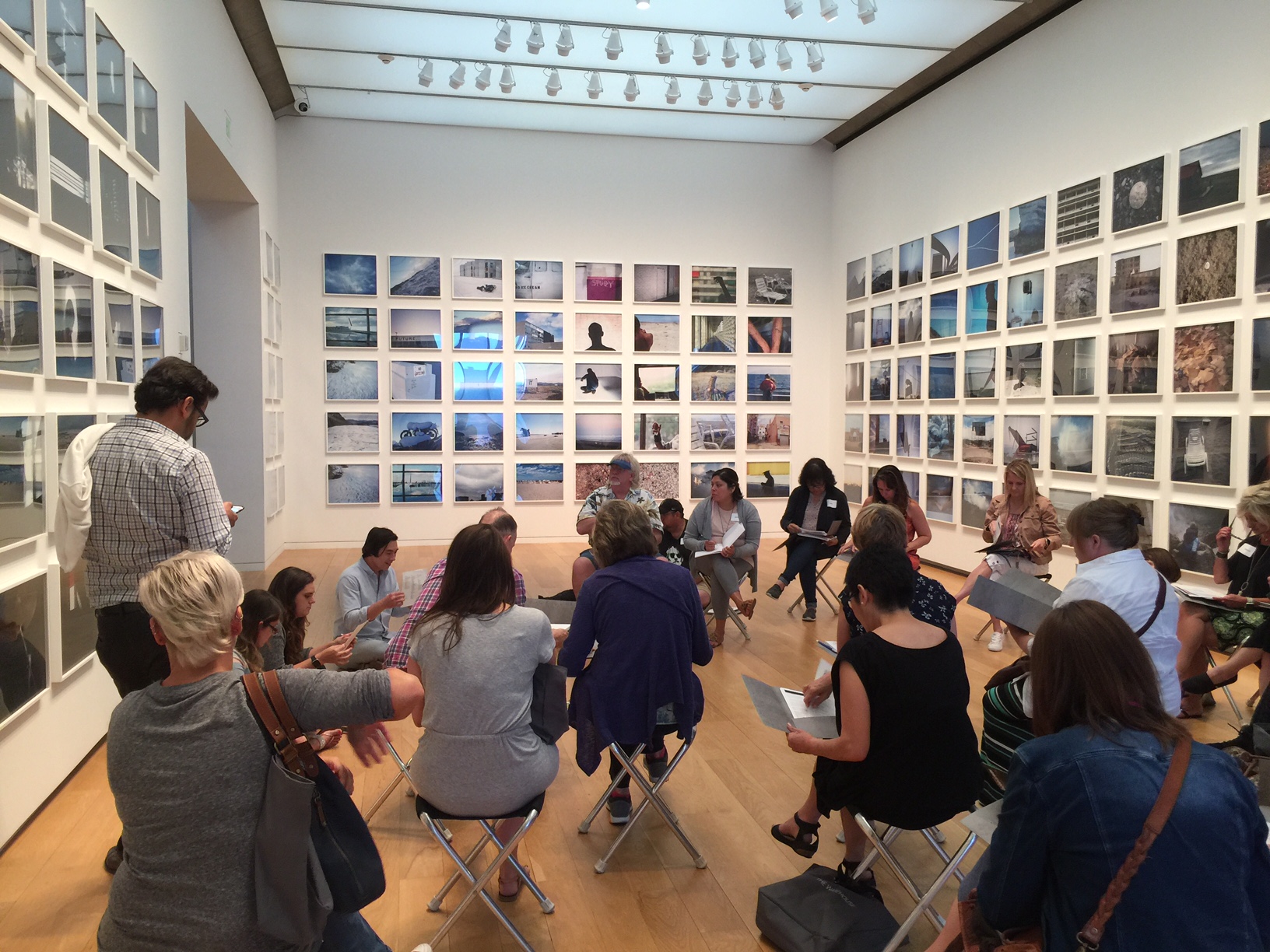
Discussing Doug Aitken: Electric Earth at the Modern Art Museum of Fort Worth.
This year, twenty-three educators embarked on a week of museum experiences, gallery discussions, and studio projects for CPE credit. Not every educator who participated has a background studying art, and the variety of perspectives enriched the quality of our discussions. In the spirit of highlighting different approaches, the museum educators brought back the “Educator Exchange” from last year and each led a session at one of the other institutions. I always find that I come away from the week inspired and energized for the upcoming school year. Check out some of our highlights from this year:
And what do our participants have to say about their experience at Museum Forum for Teachers?
This week has felt like a vacation. It’s as though I have been on guided tours on location by Rick Steves every day. I’d love to attend next year…Well planned. Well done.
This was my favorite year so far…I don’t know how all of you manage every year to make this event a week of so much learning and fun. I can’t wait to get to each museum each day. Absolutely my favorite thing I do all year! Thank you!
This was my first year and I hope to be back! Art camp for teachers is how I will explain it when I am asked about the highlight of my summer.
I feel inspired, charged up again, and optimistic about the new ideas I’ll bring to my students. Thanks!
Once again, this Forum has completely exceeded my expectations. The content was rich, insightful, and relative, the projects were fun and accessible, and everyone on staff is an absolute joy to work with. This Forum is not only the cornerstone of my upperclassman content, but a week for me to reconnect with art and truly be myself. Thank you all so much for what you do!
Sign up to receive our emails and check the box for Information for Teachers, so you can stay connected to exciting professional development opportunities here at the DMA and join us for Museum Forum for Teachers next year!
Lindsay O’Connor
Manager of Docent and Teacher Programs
